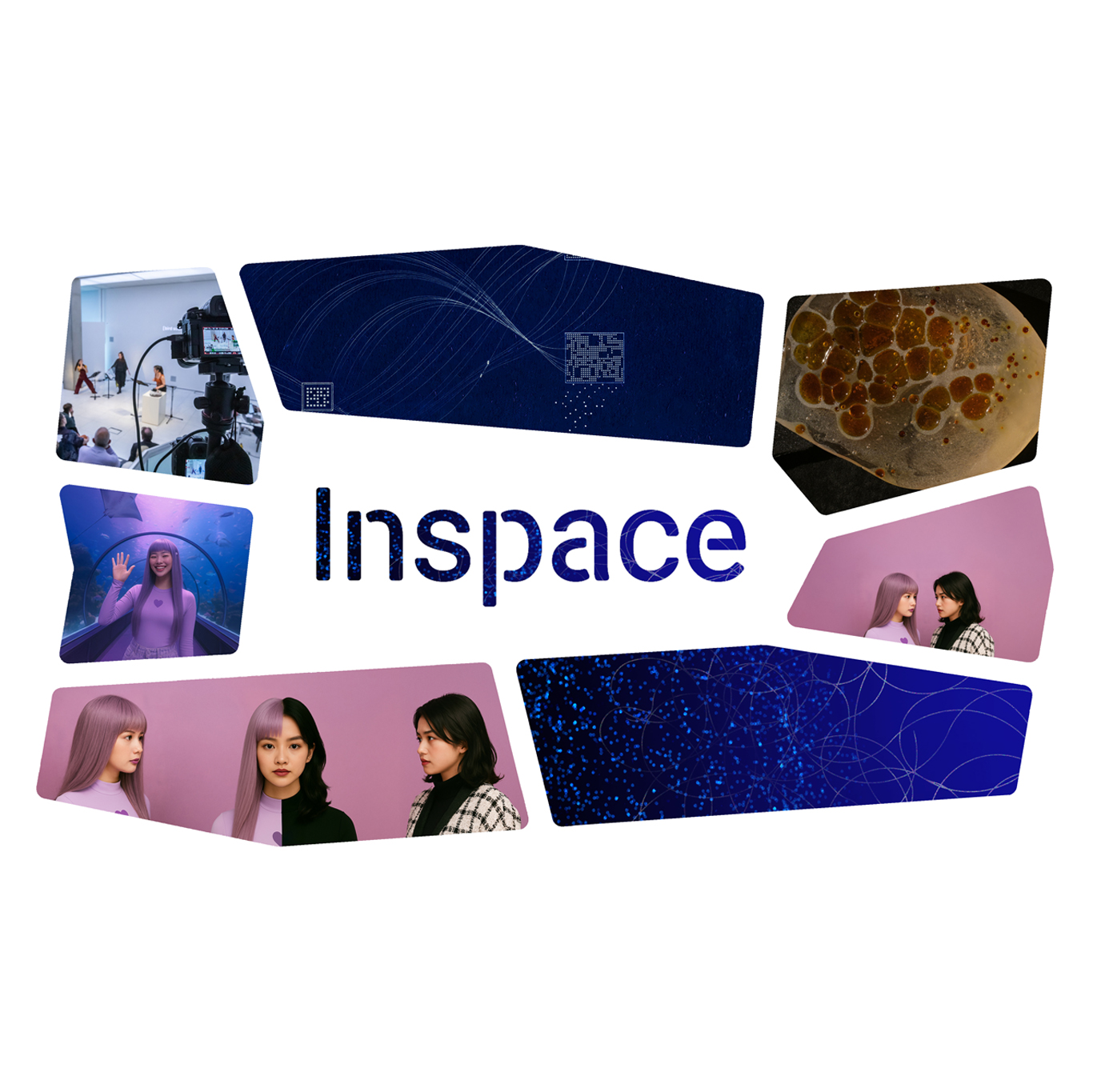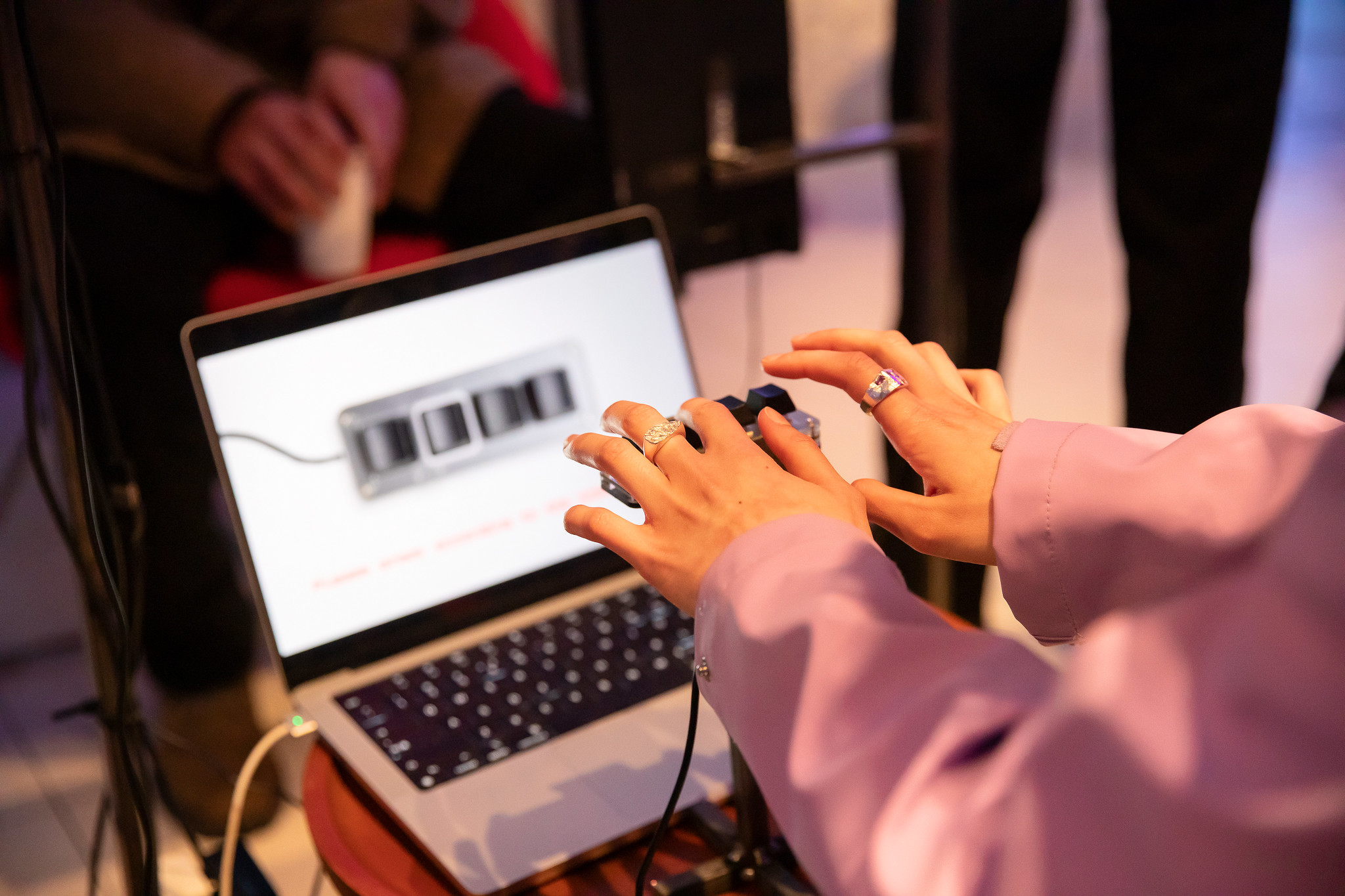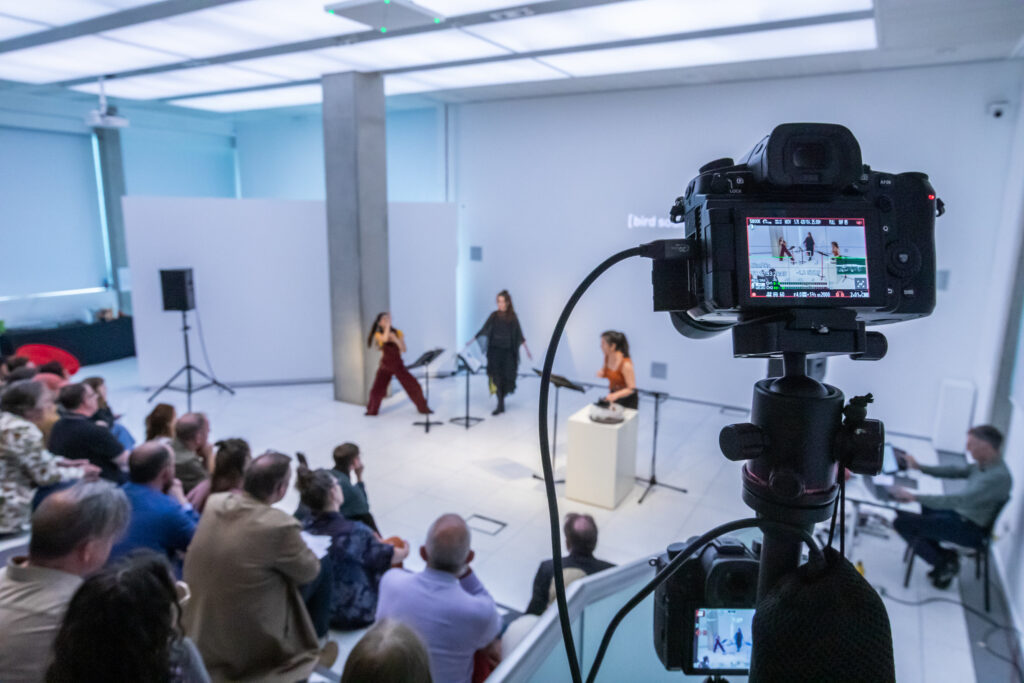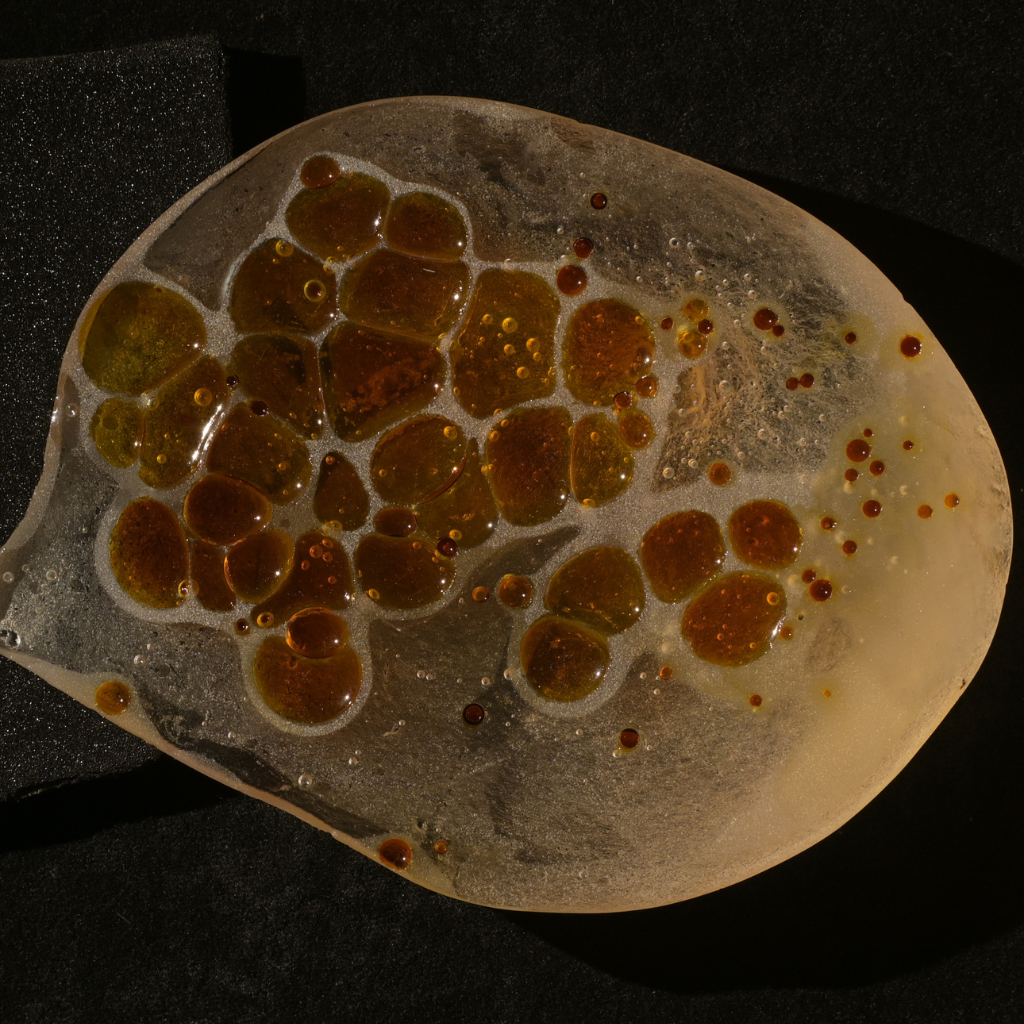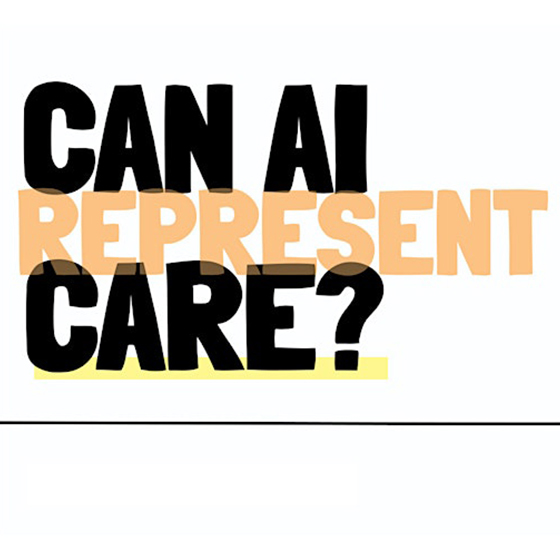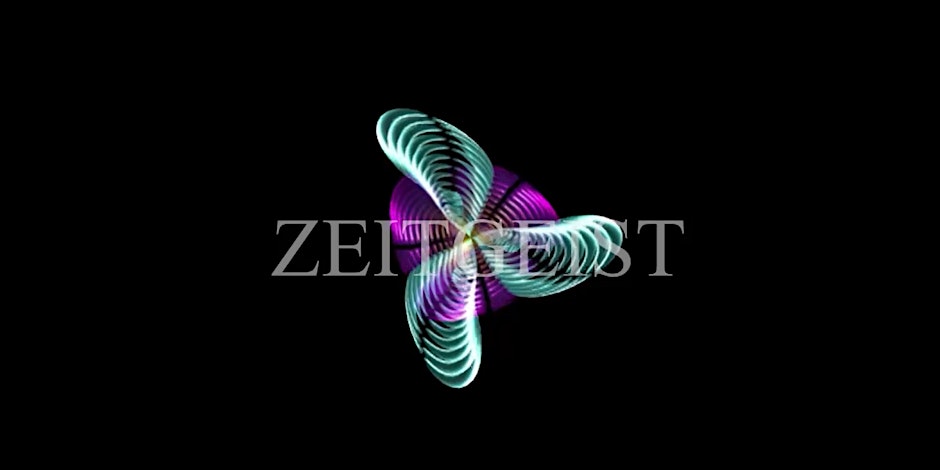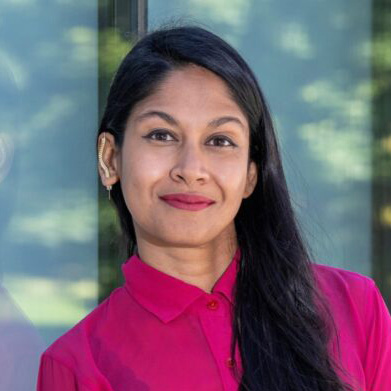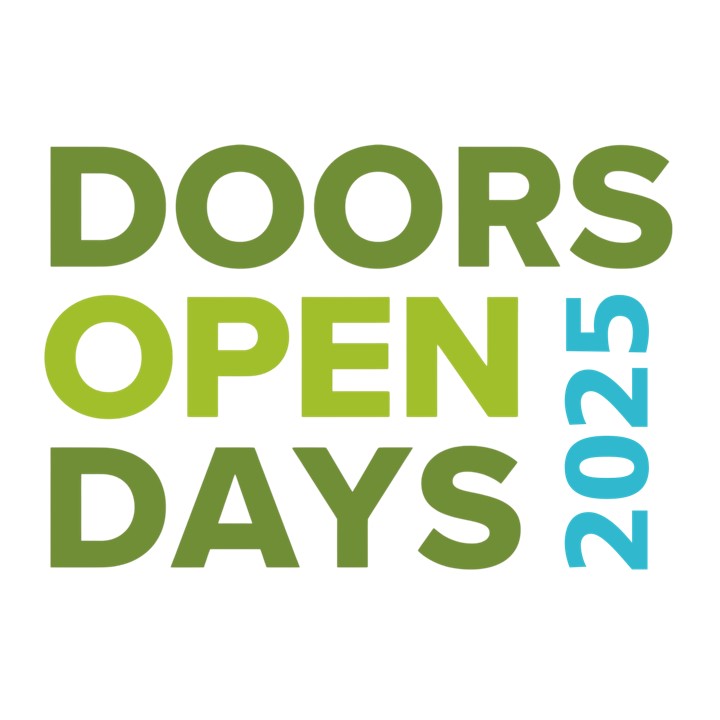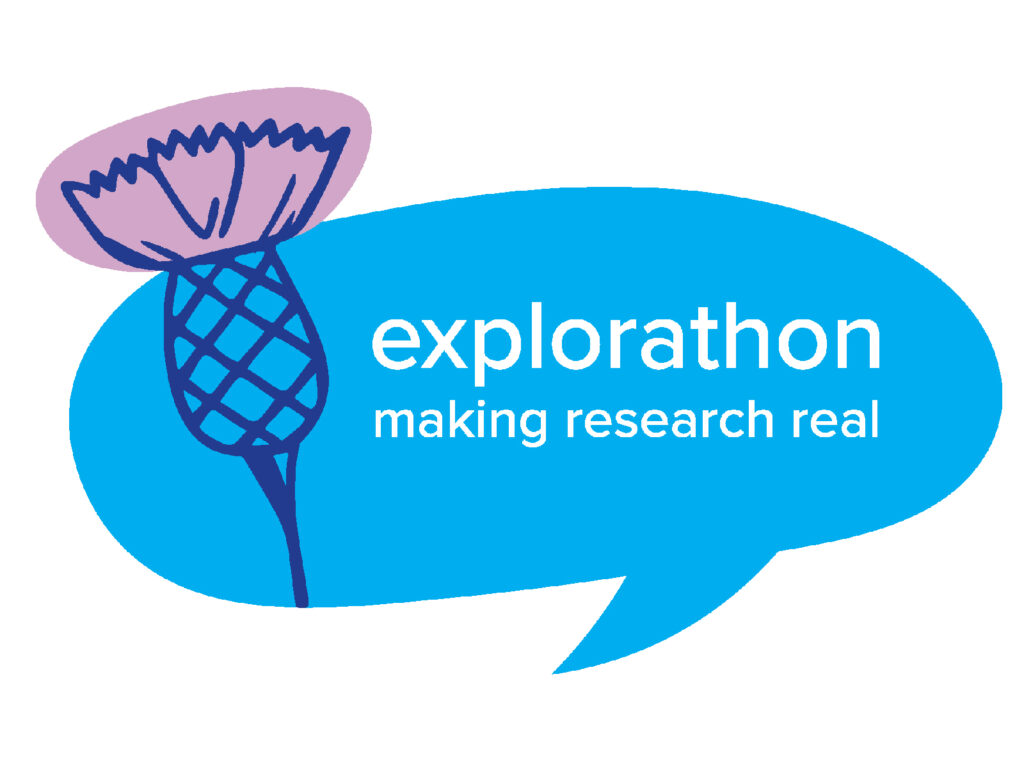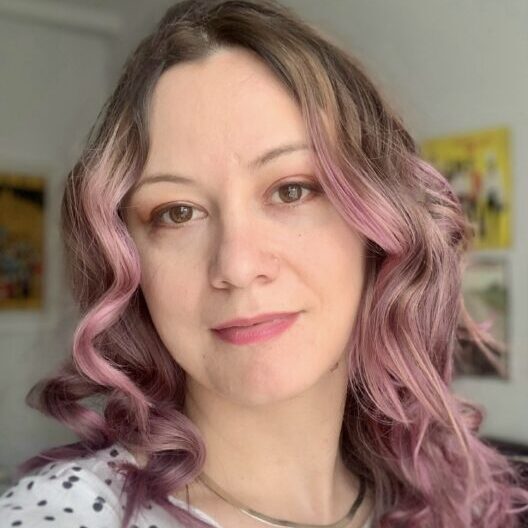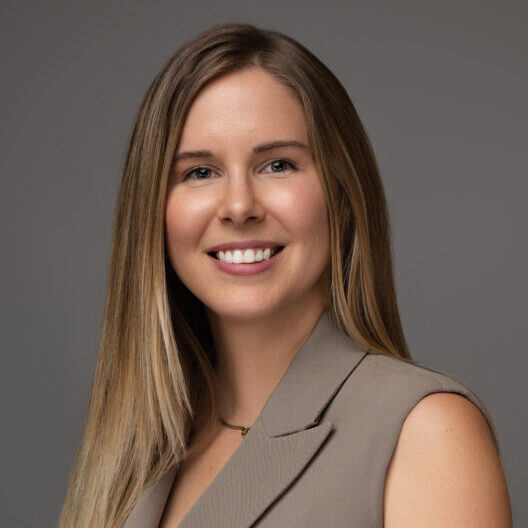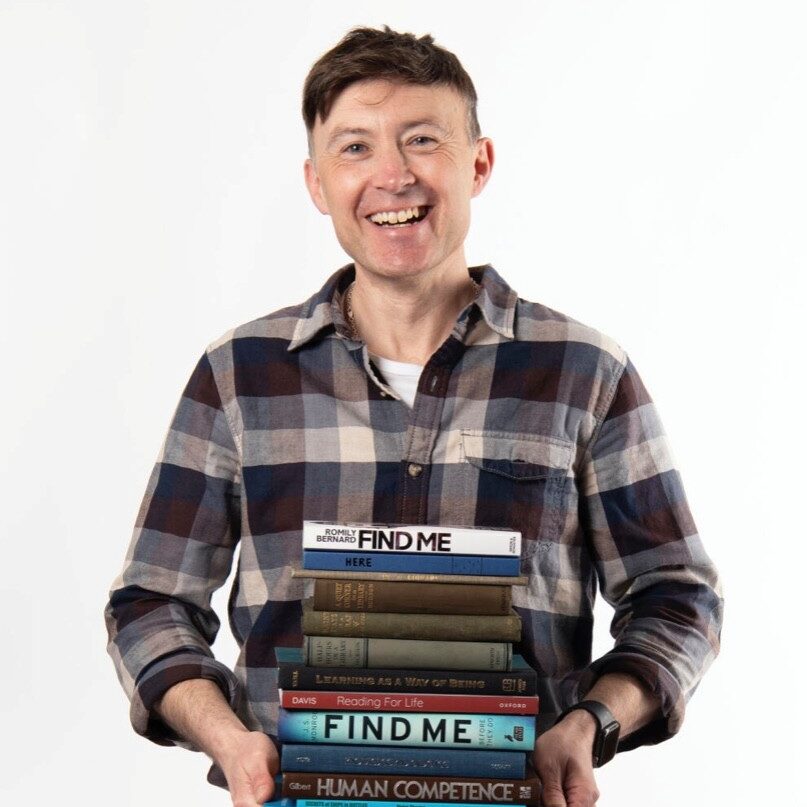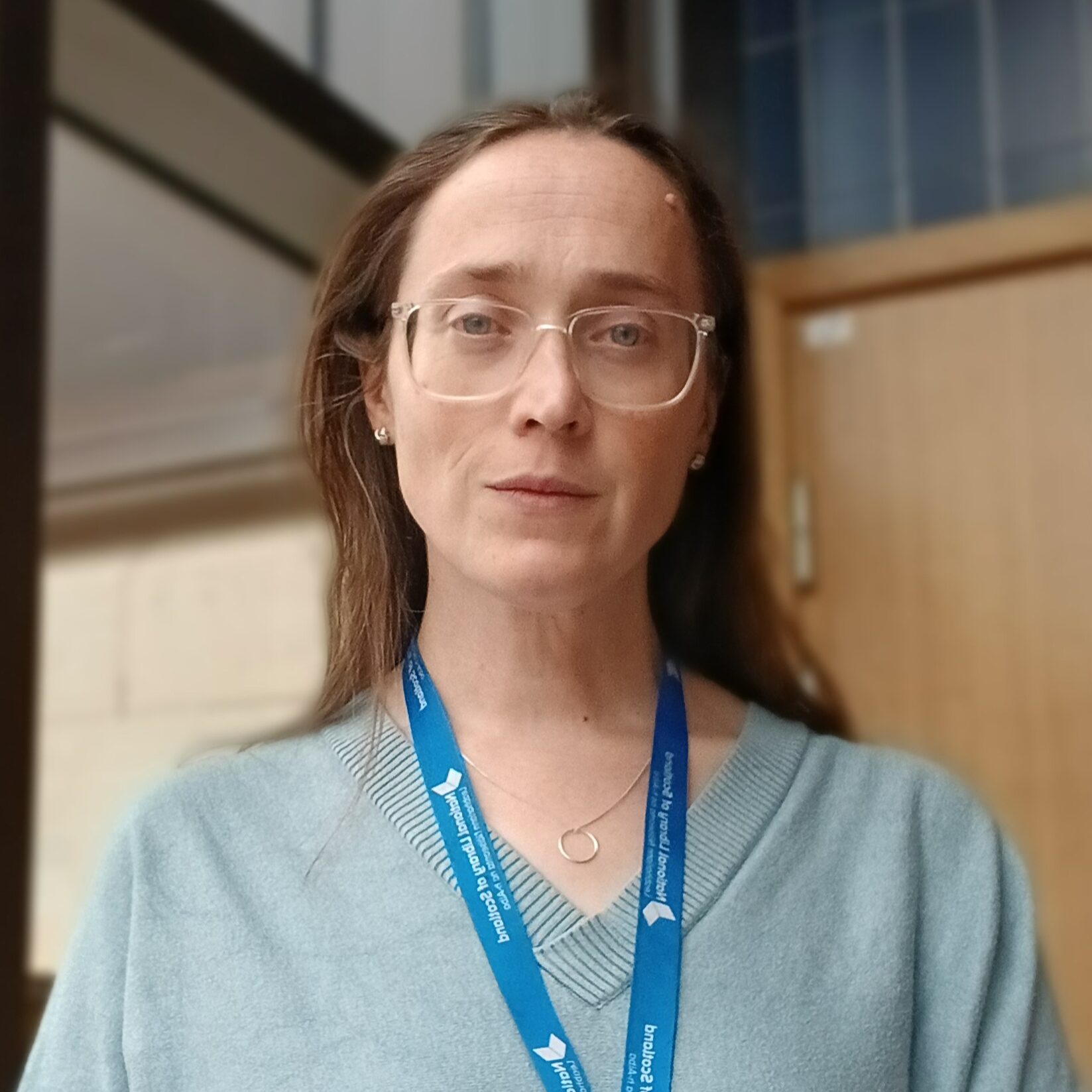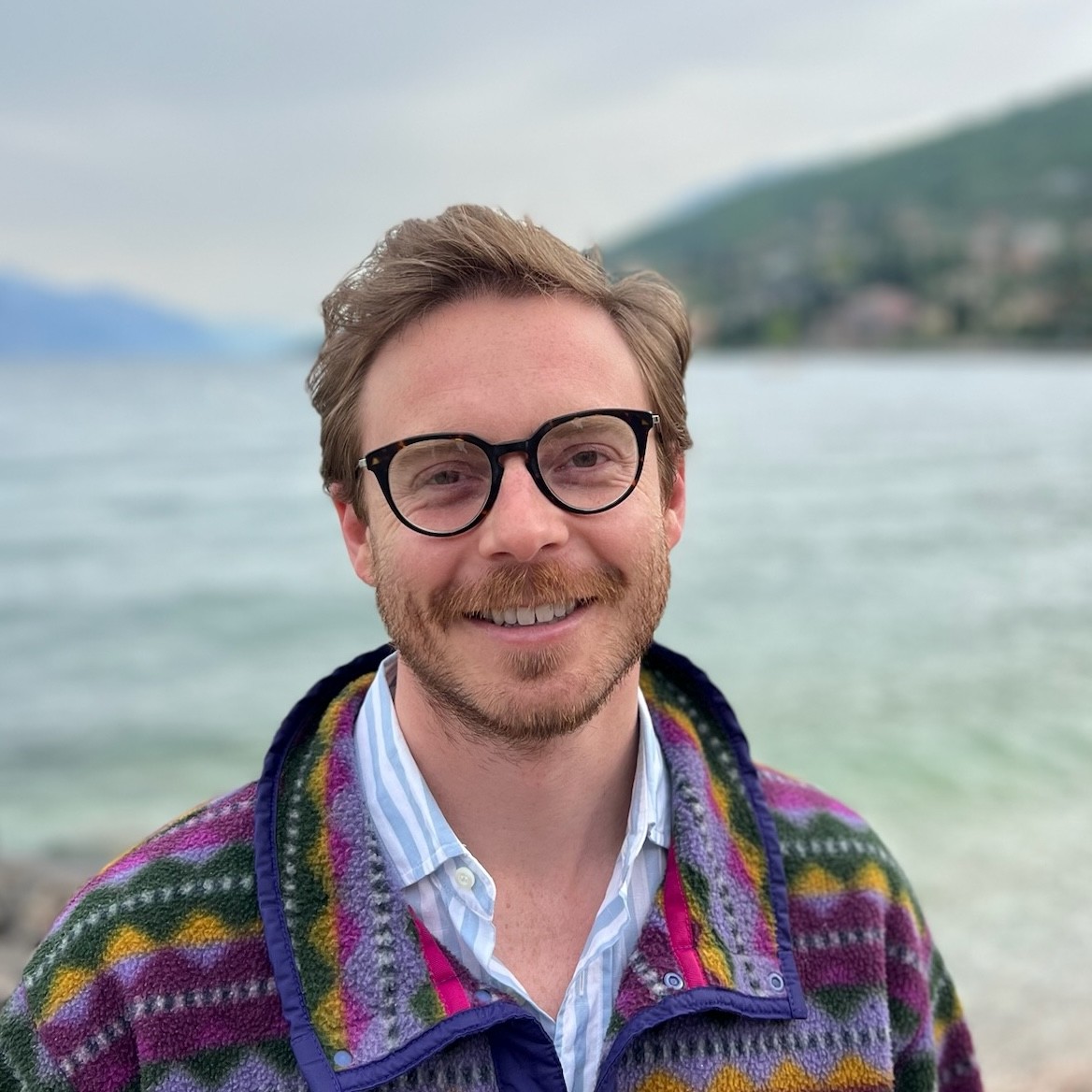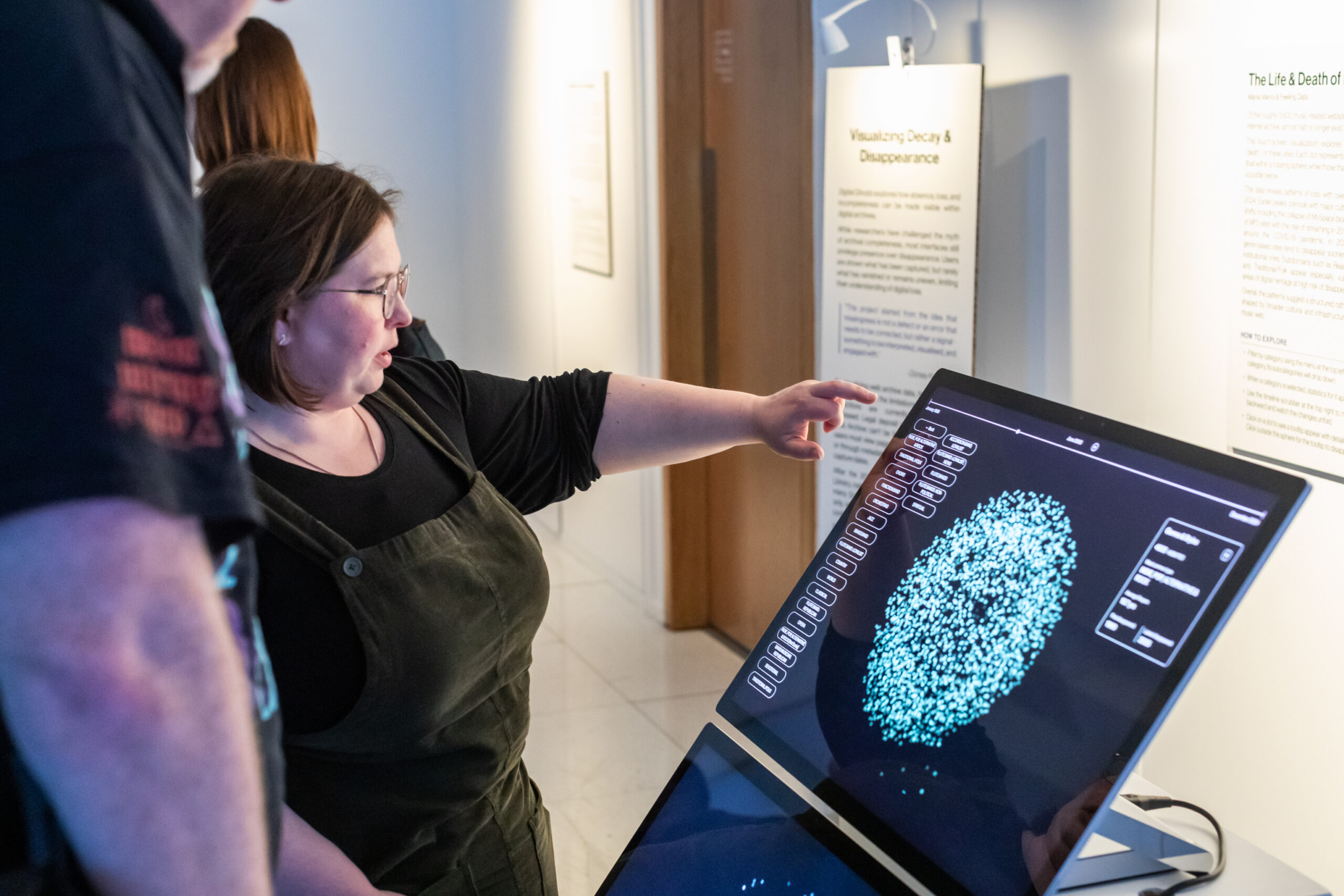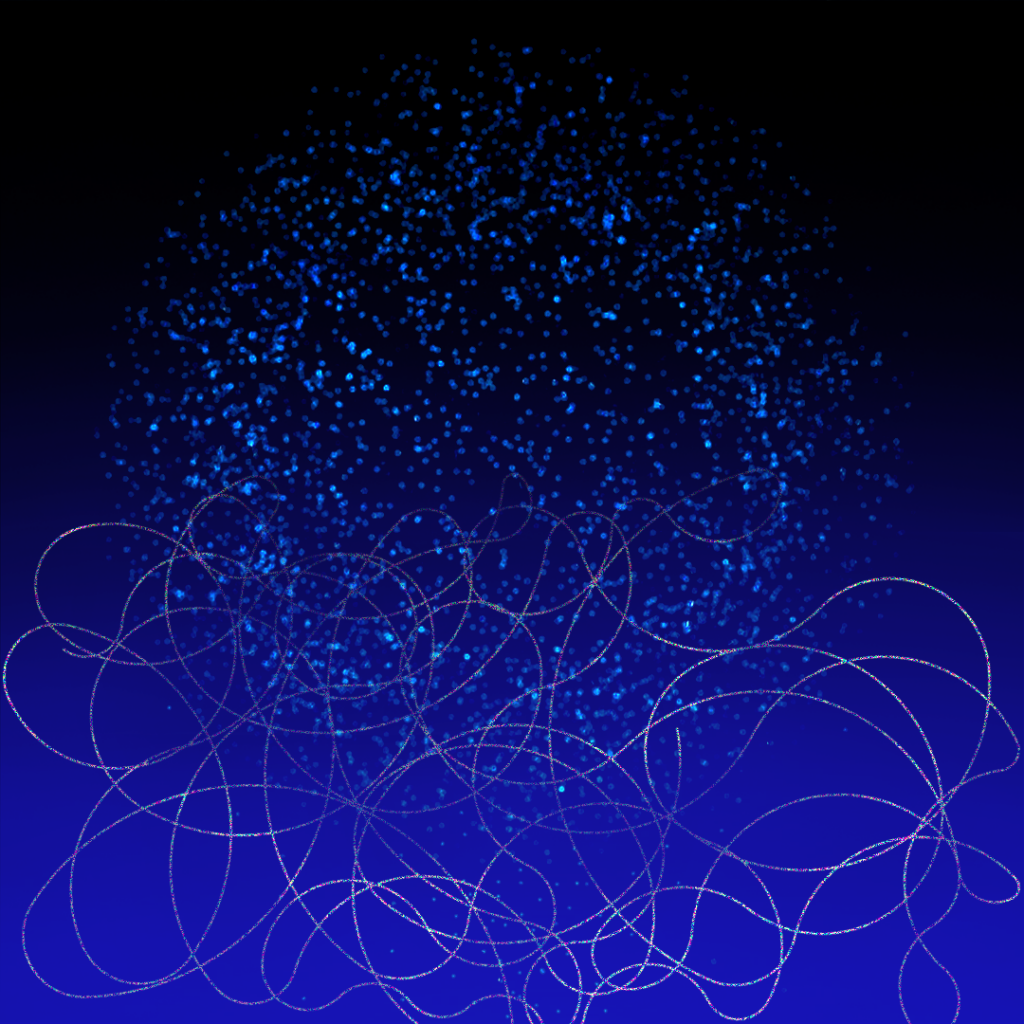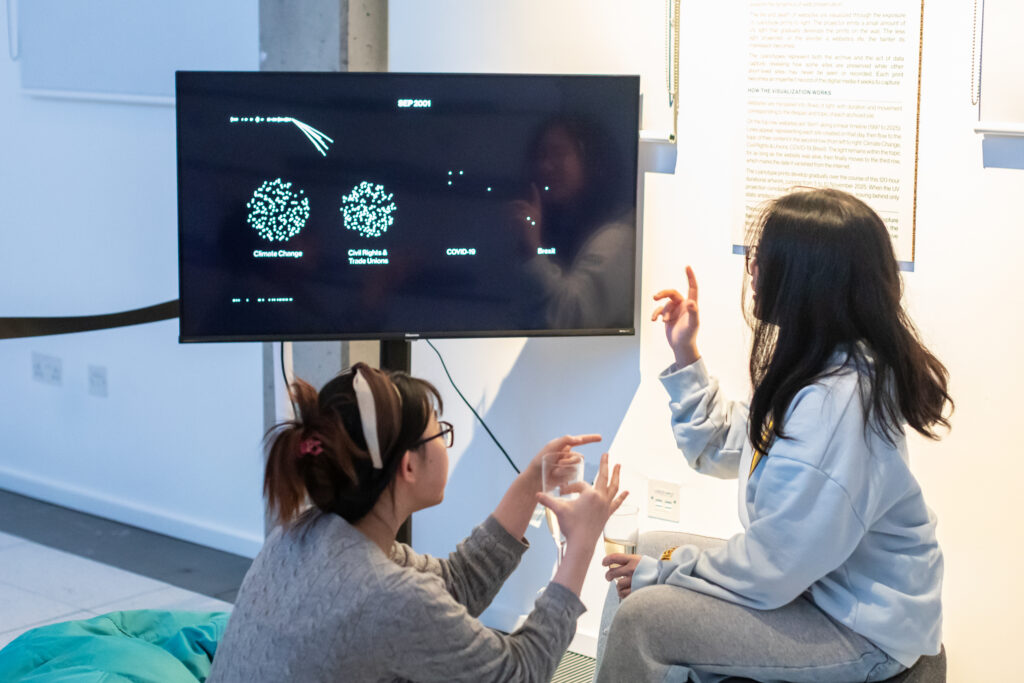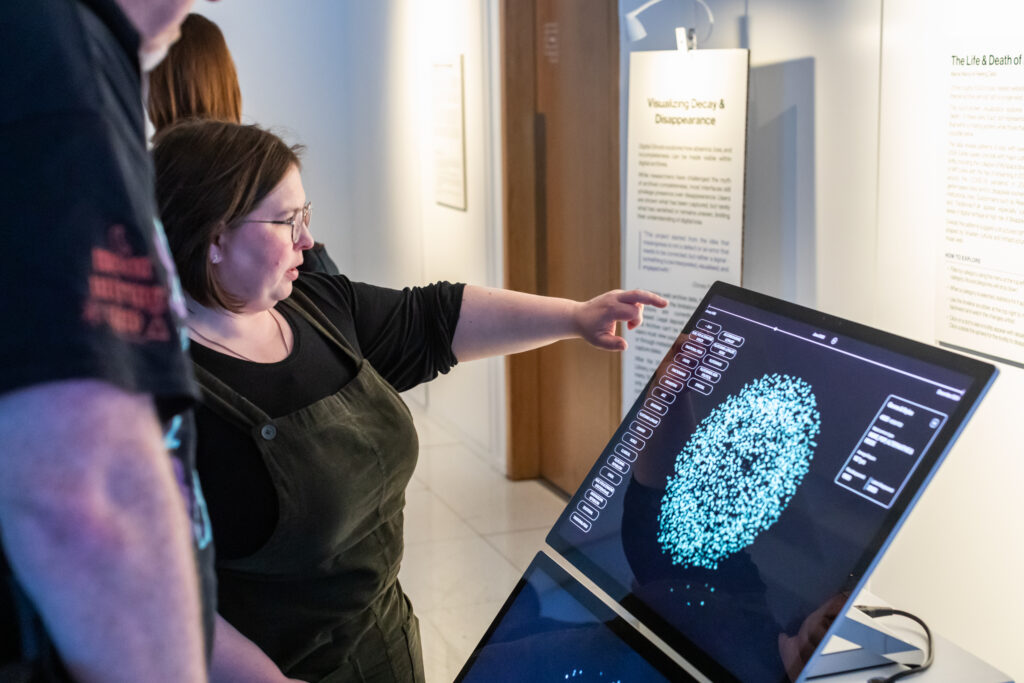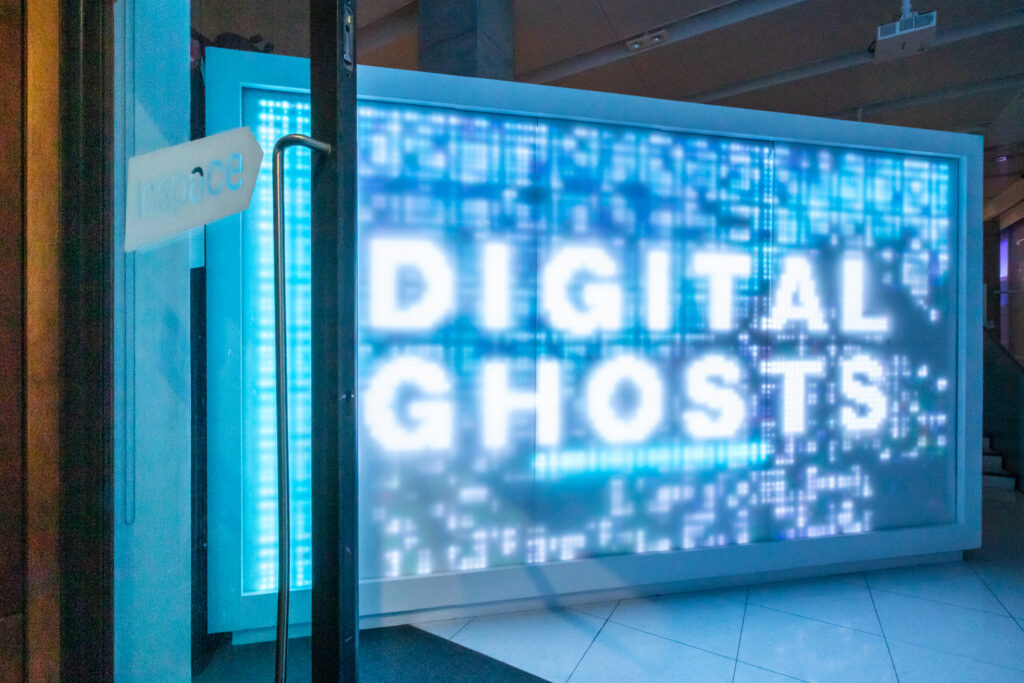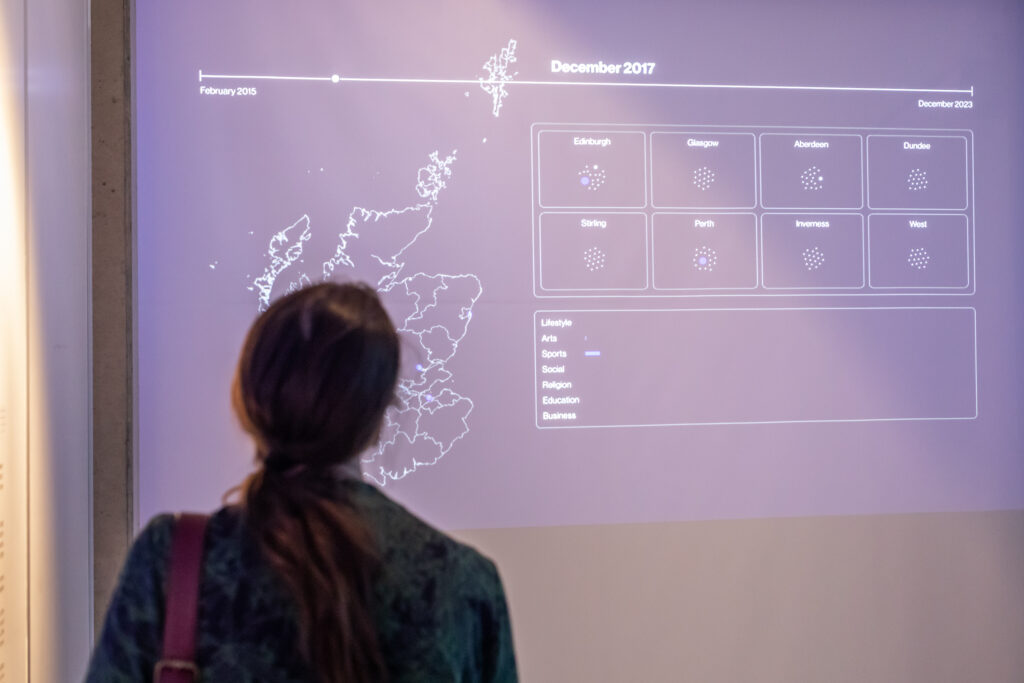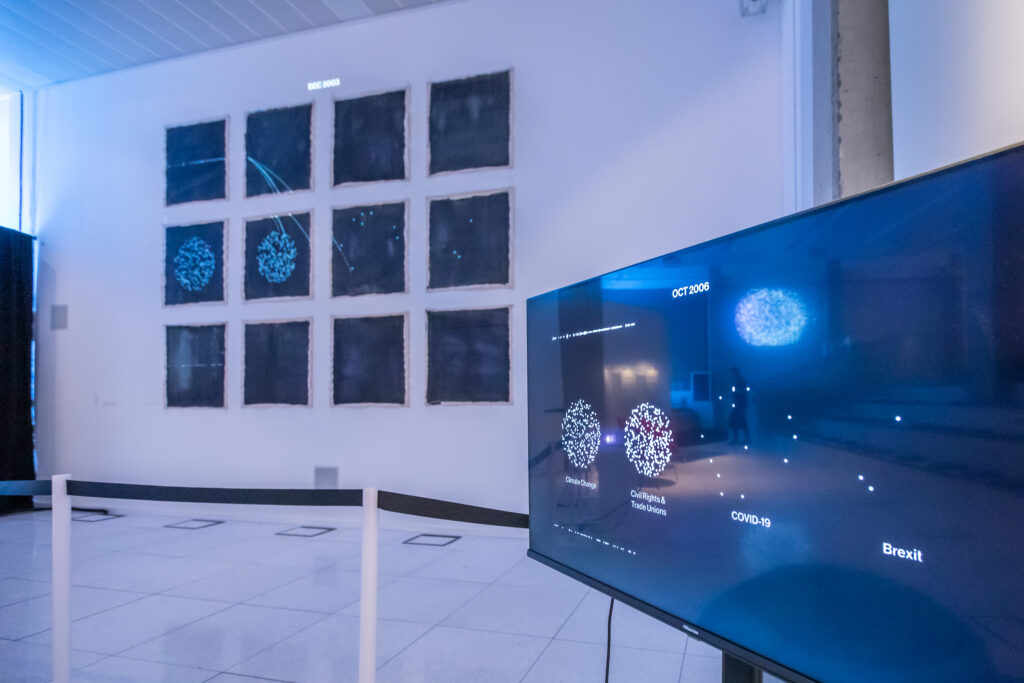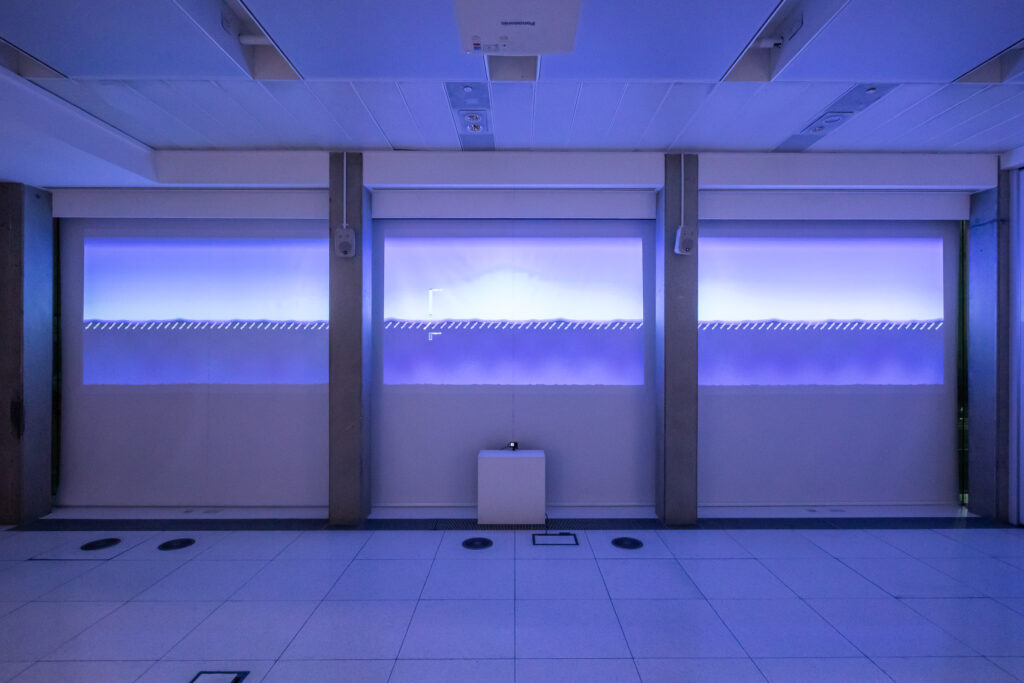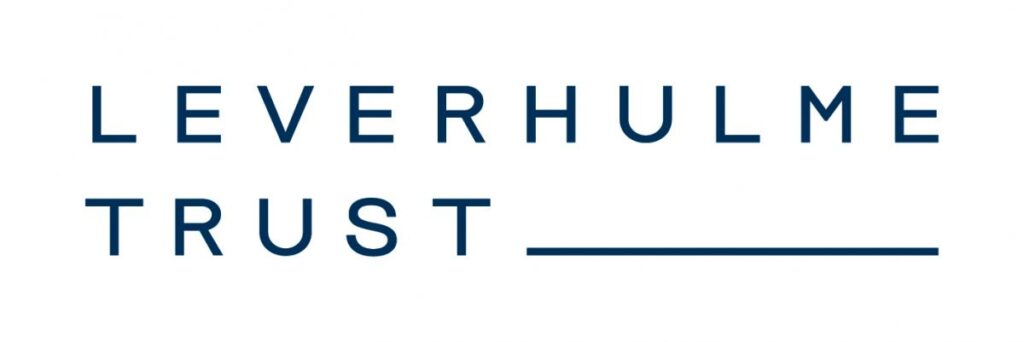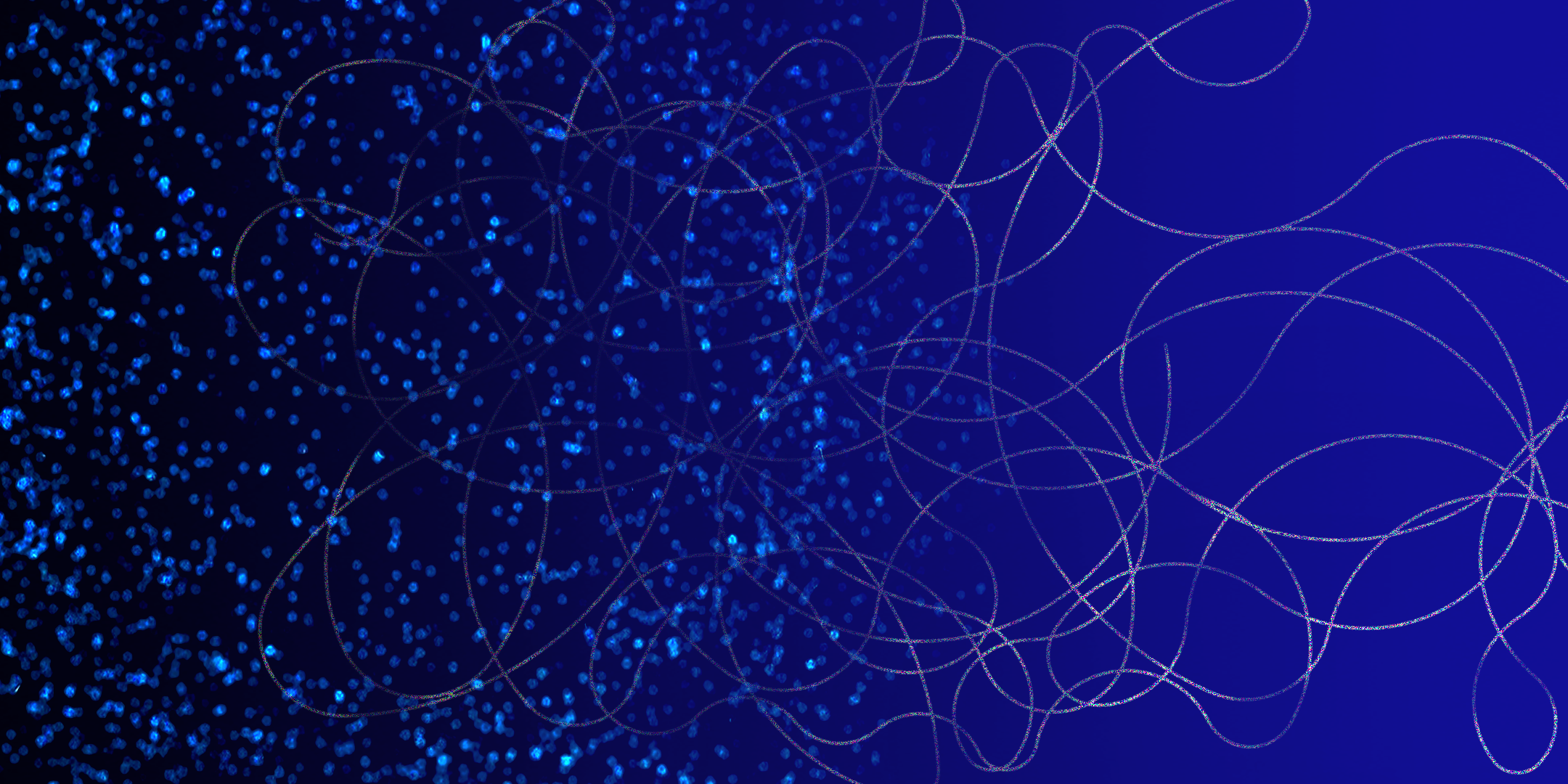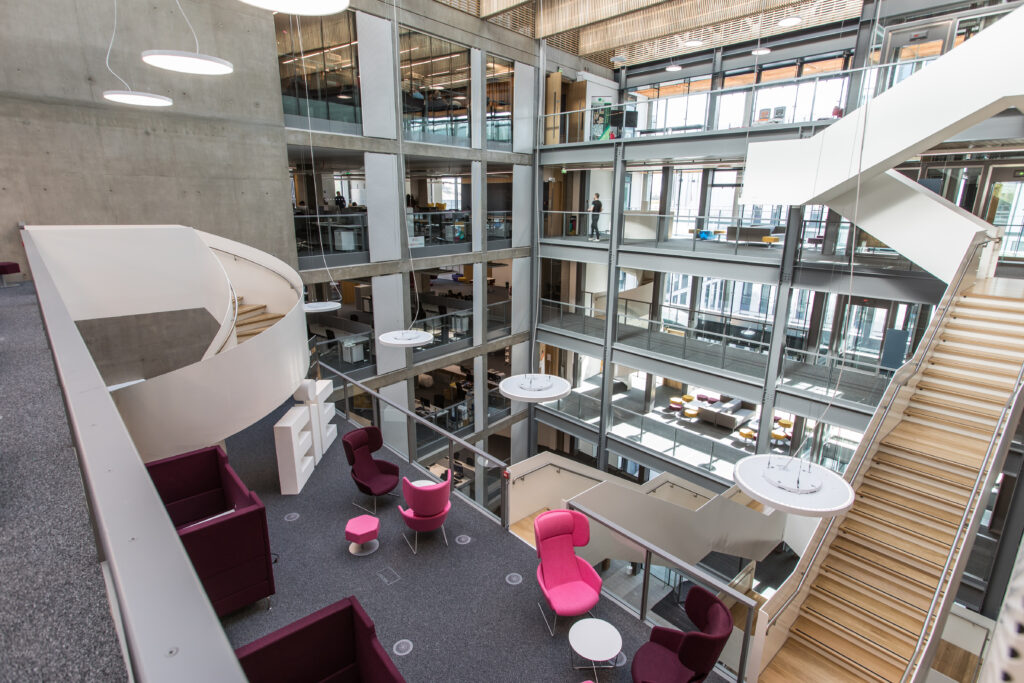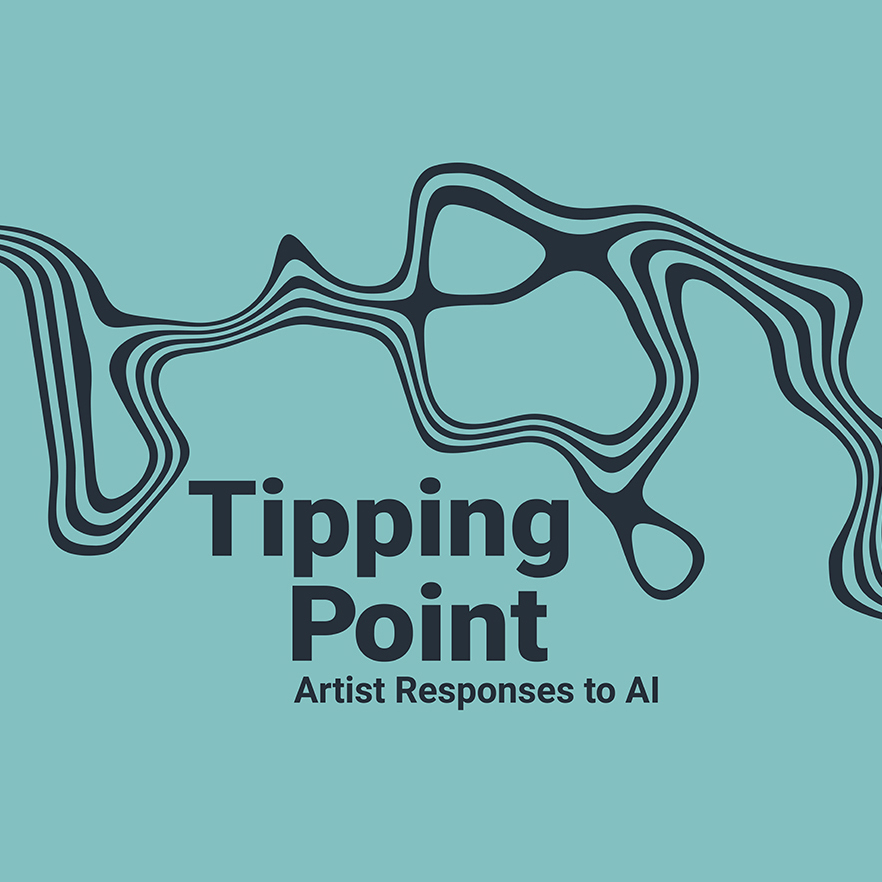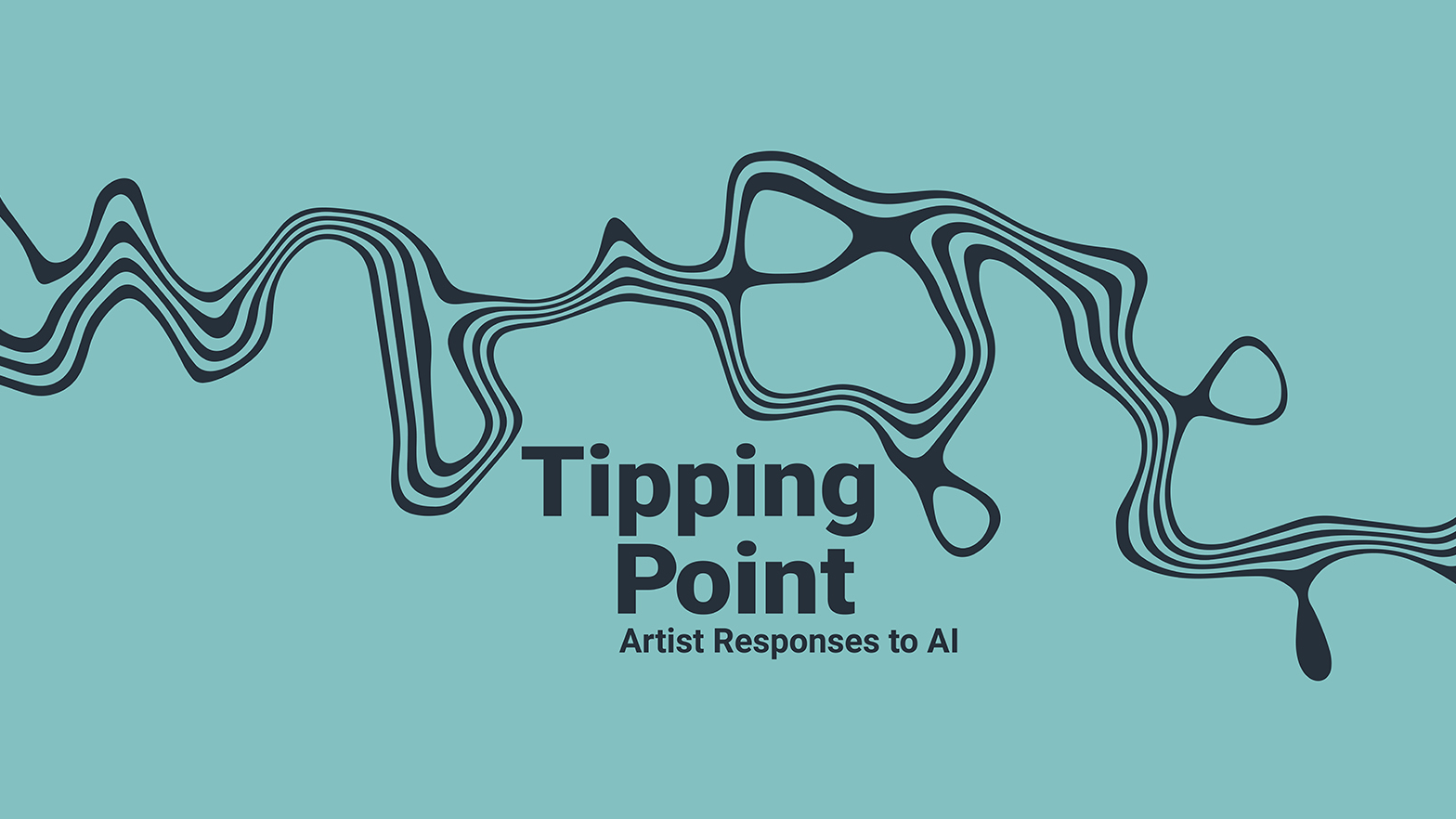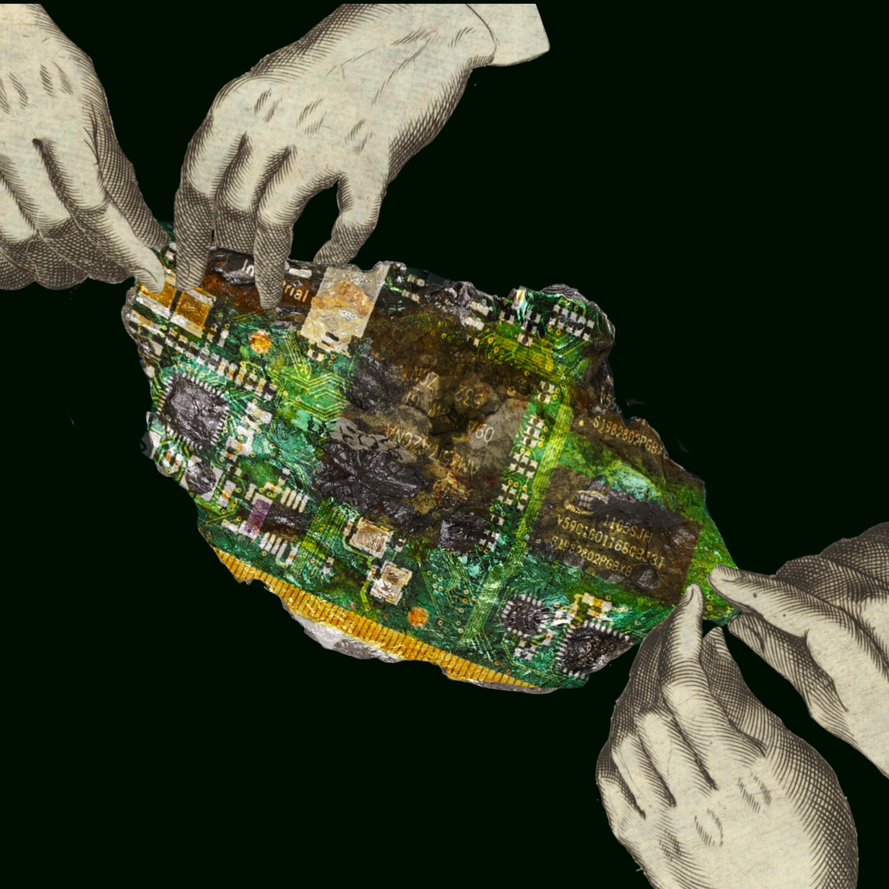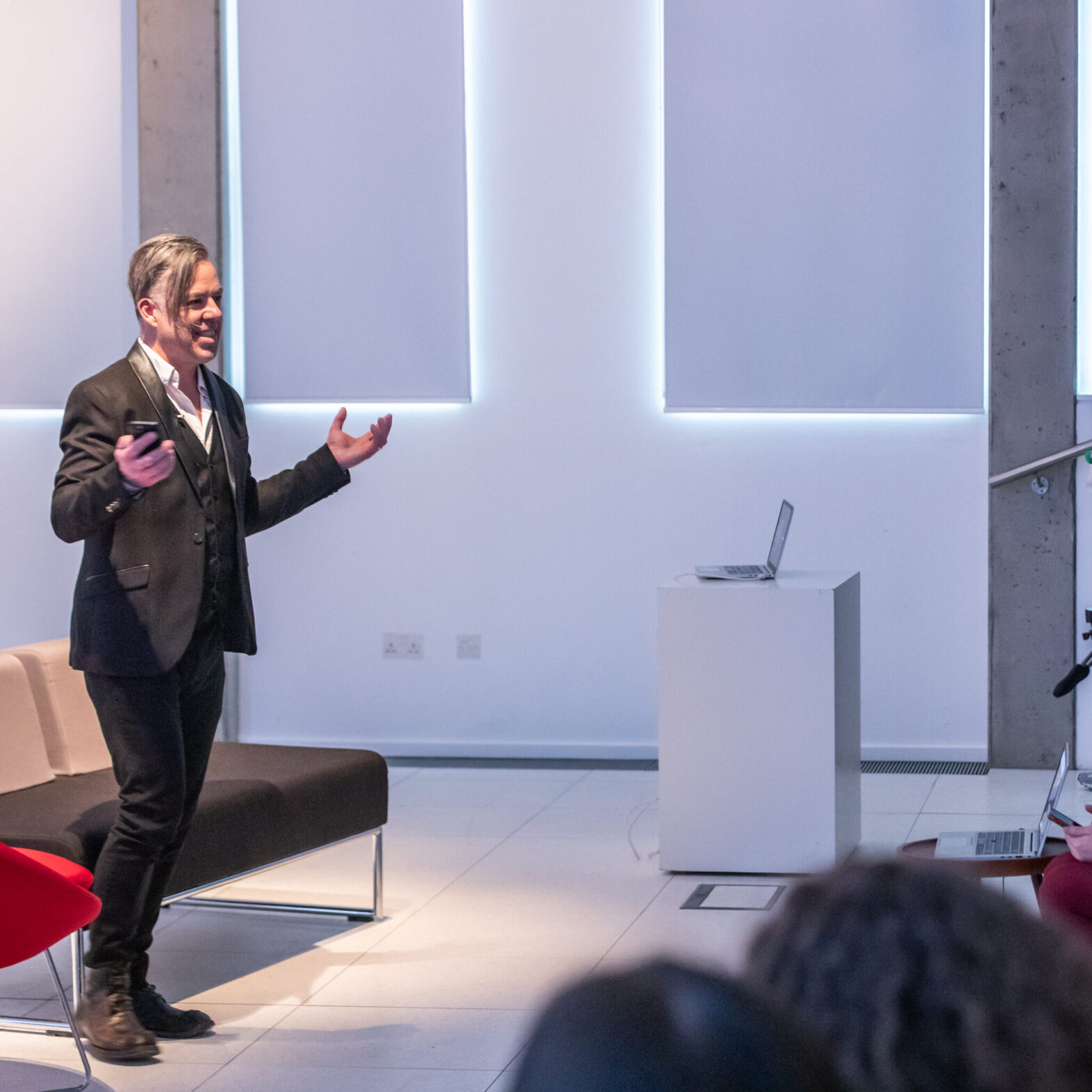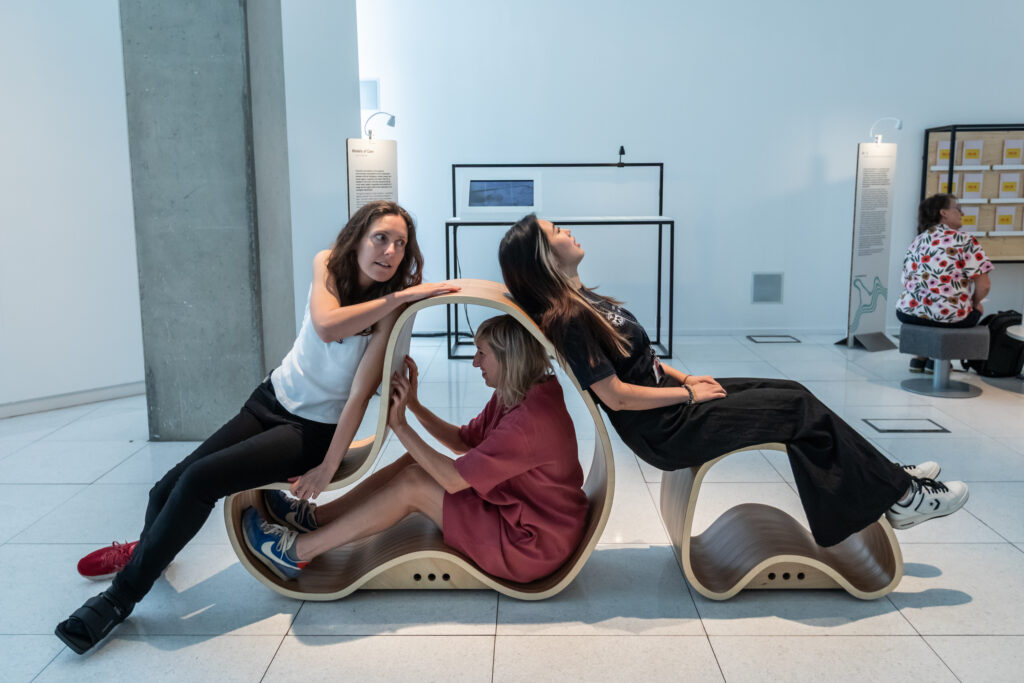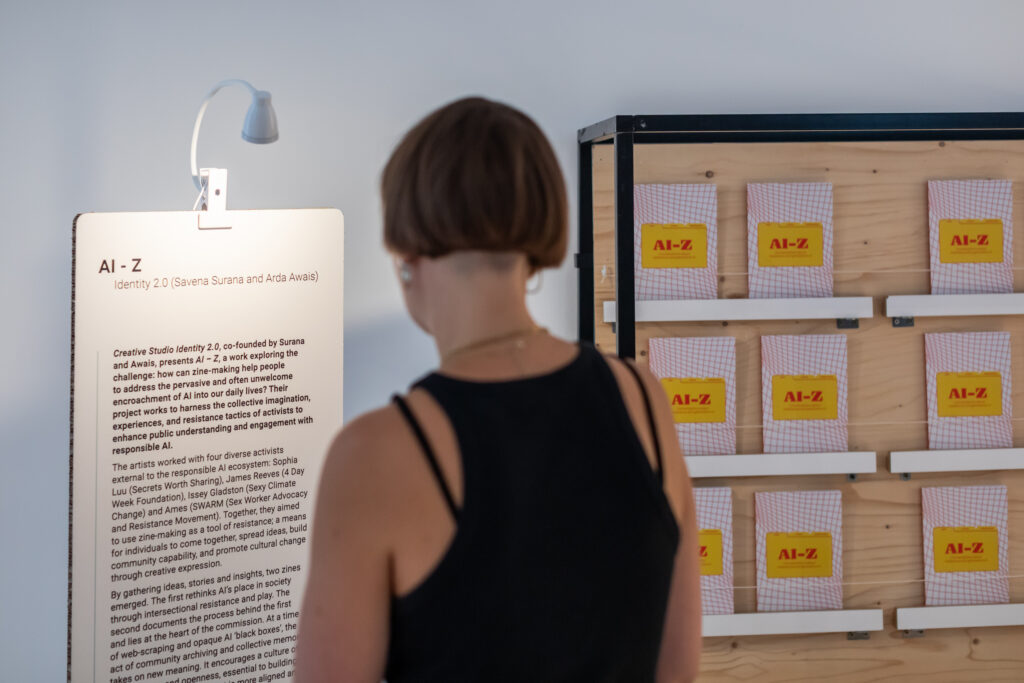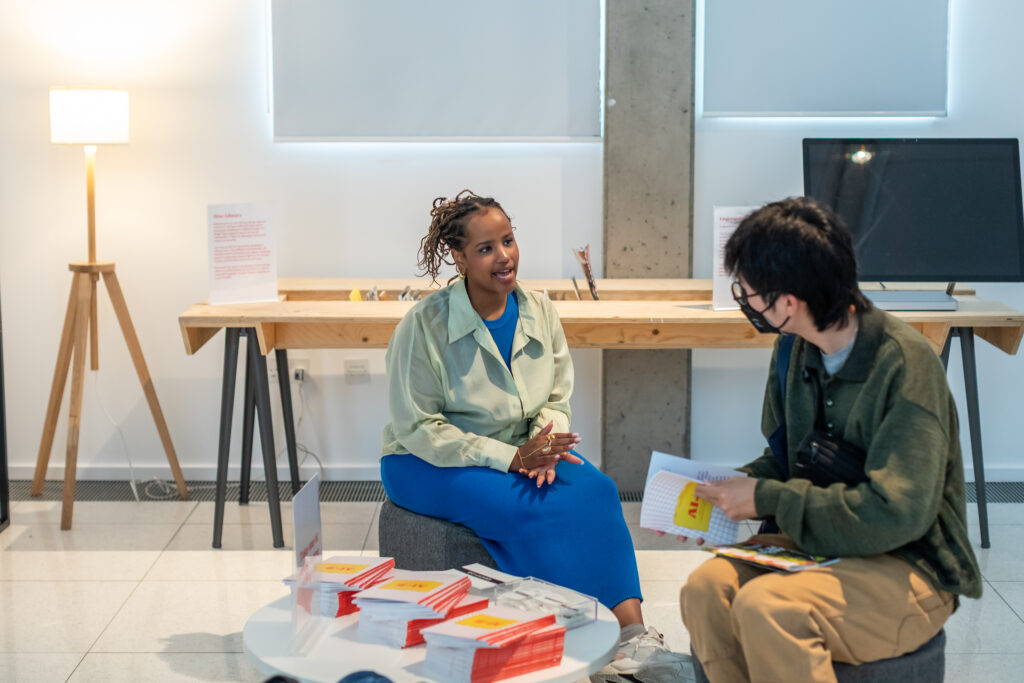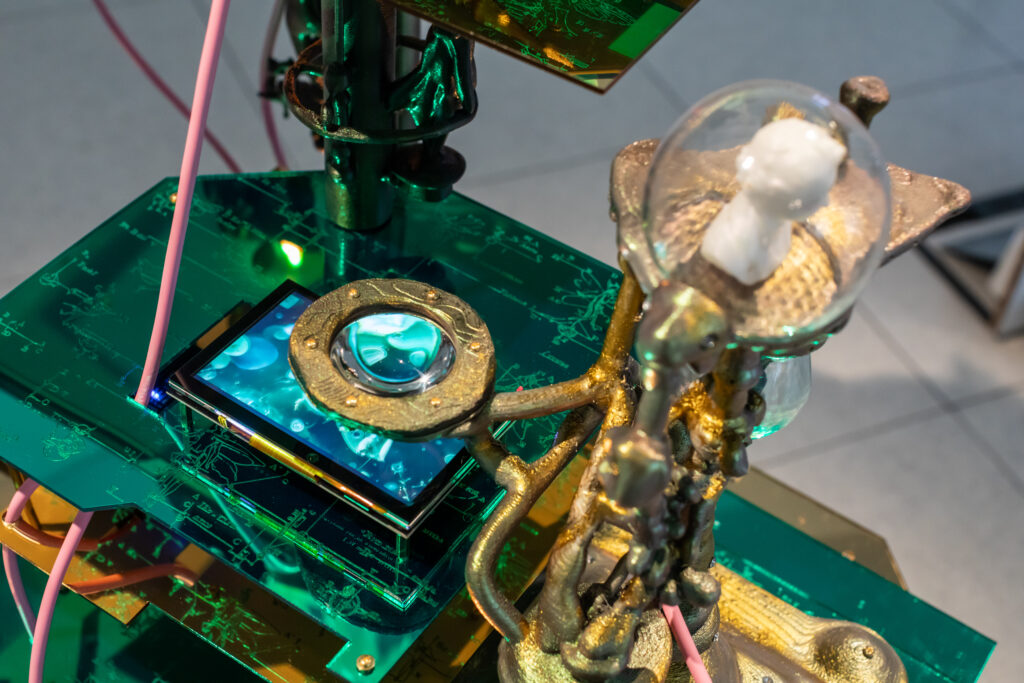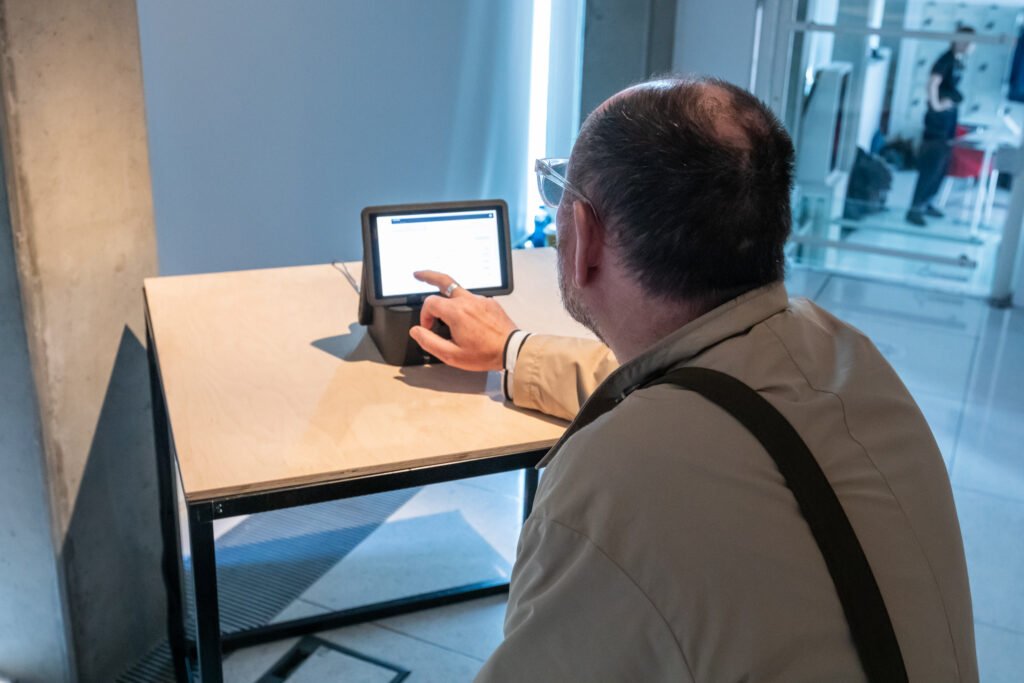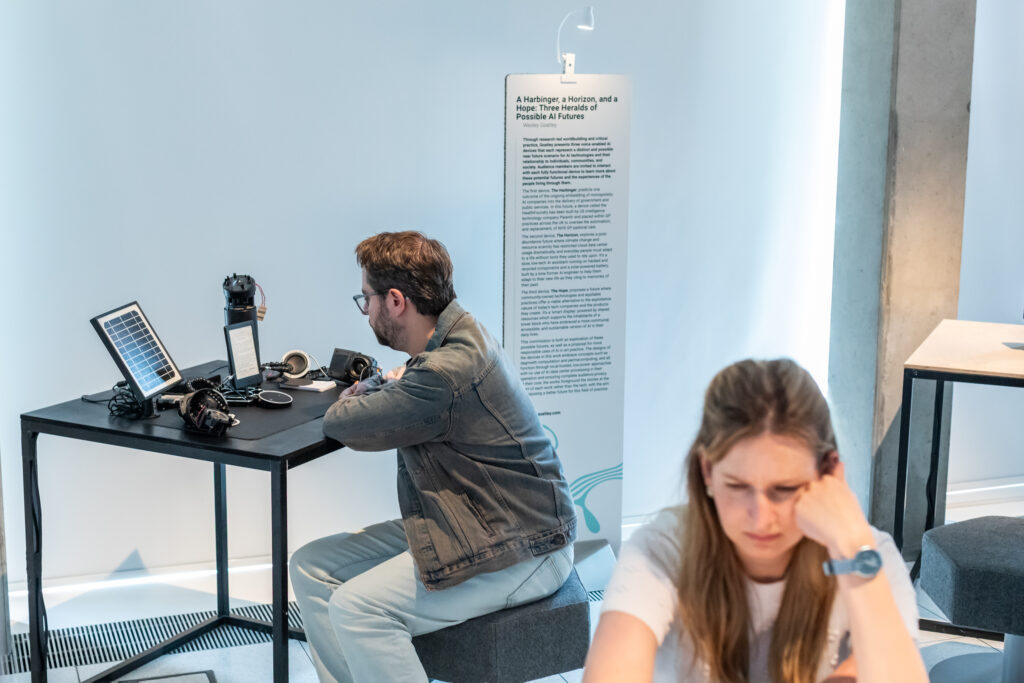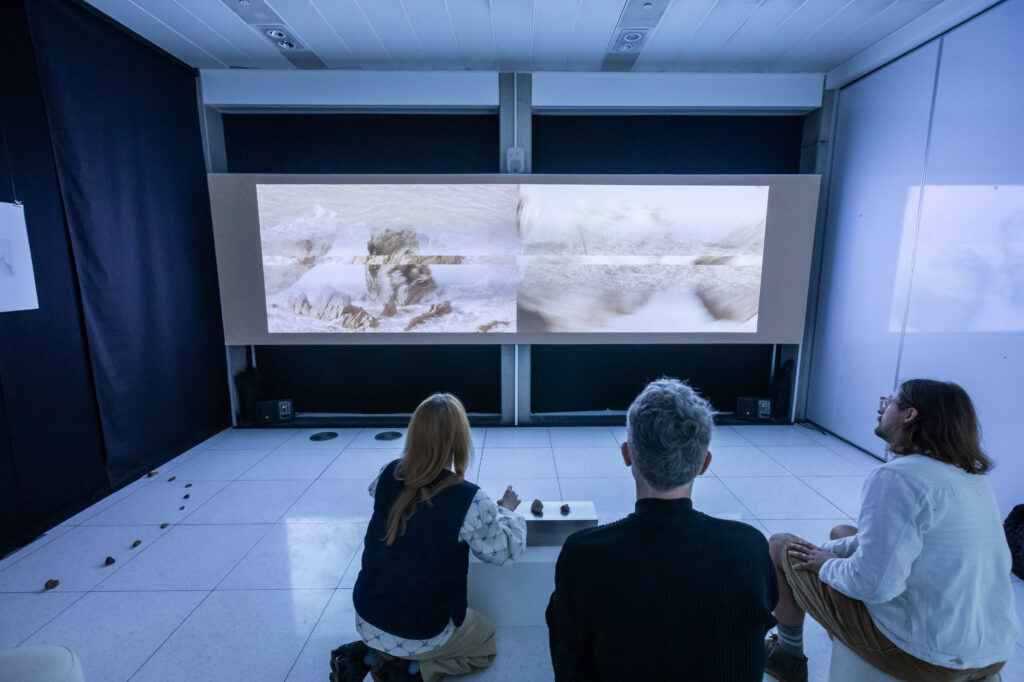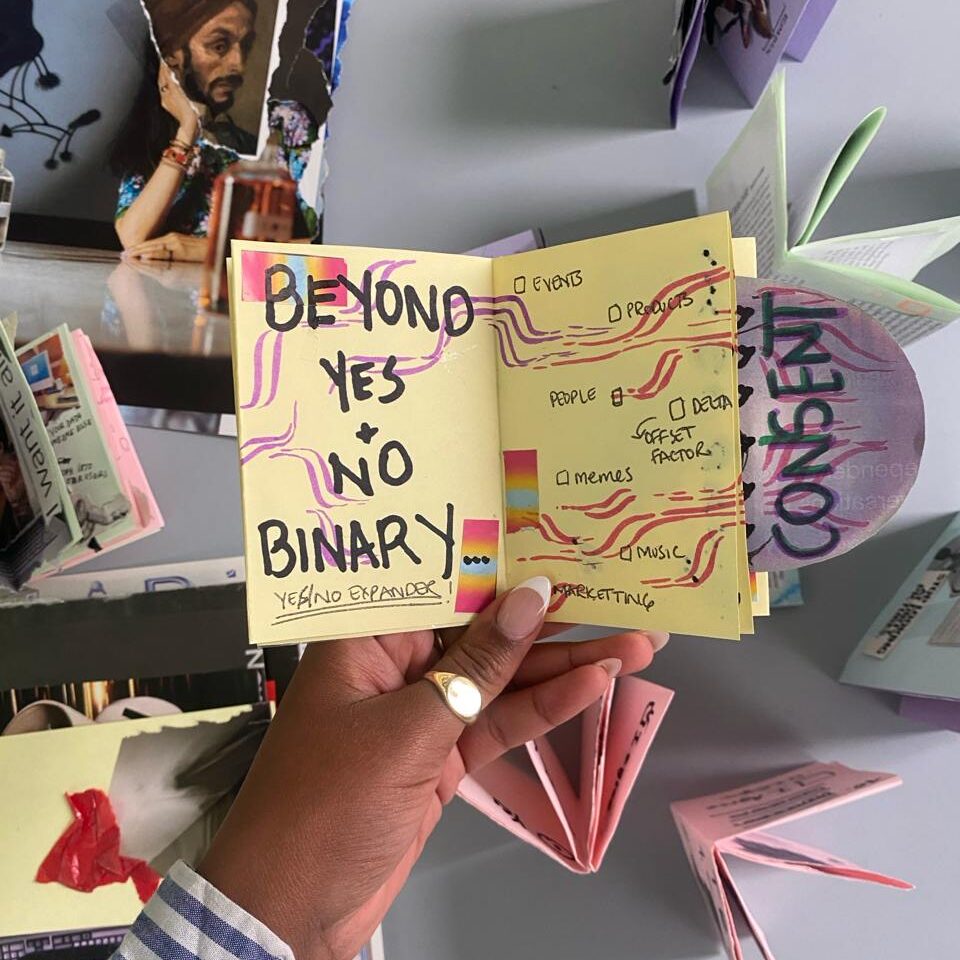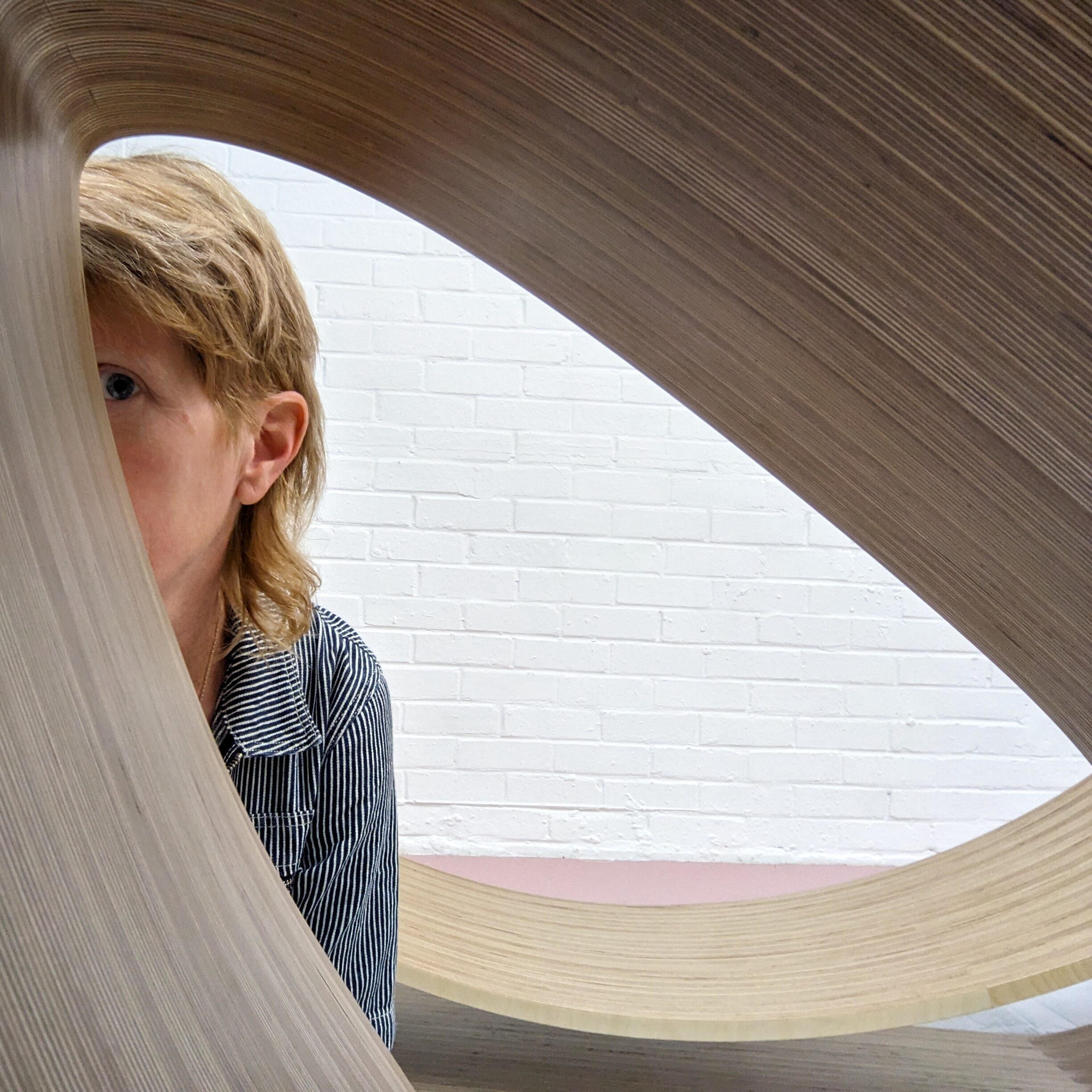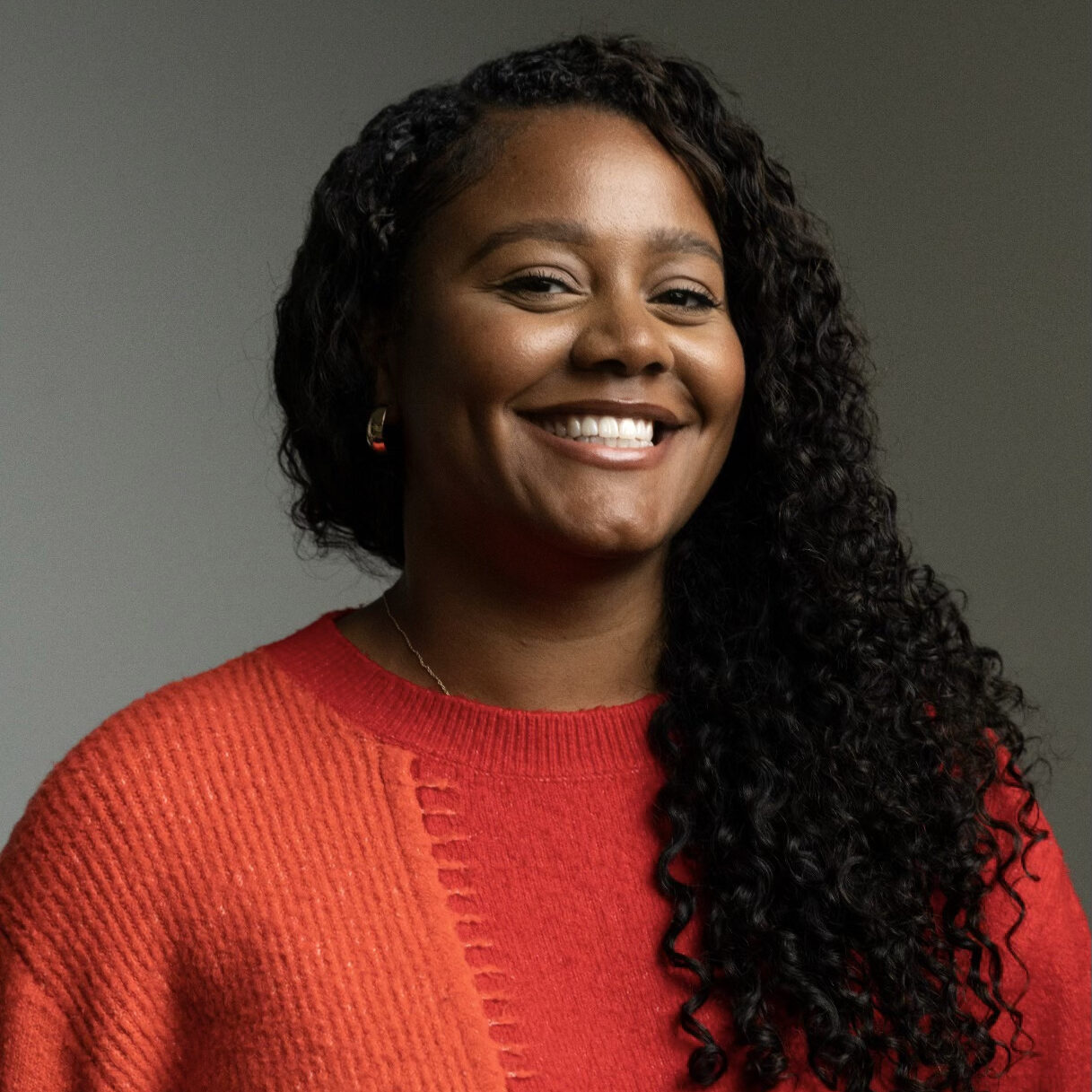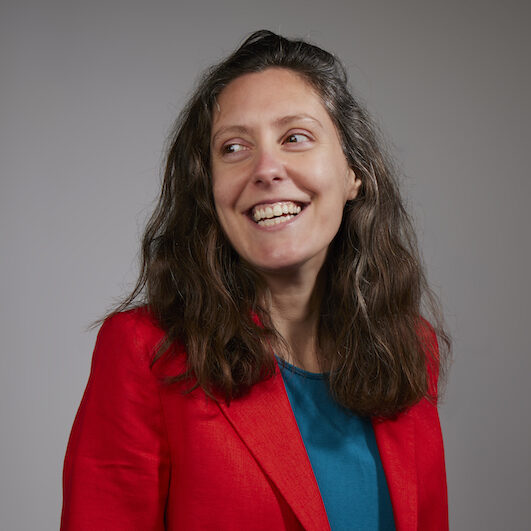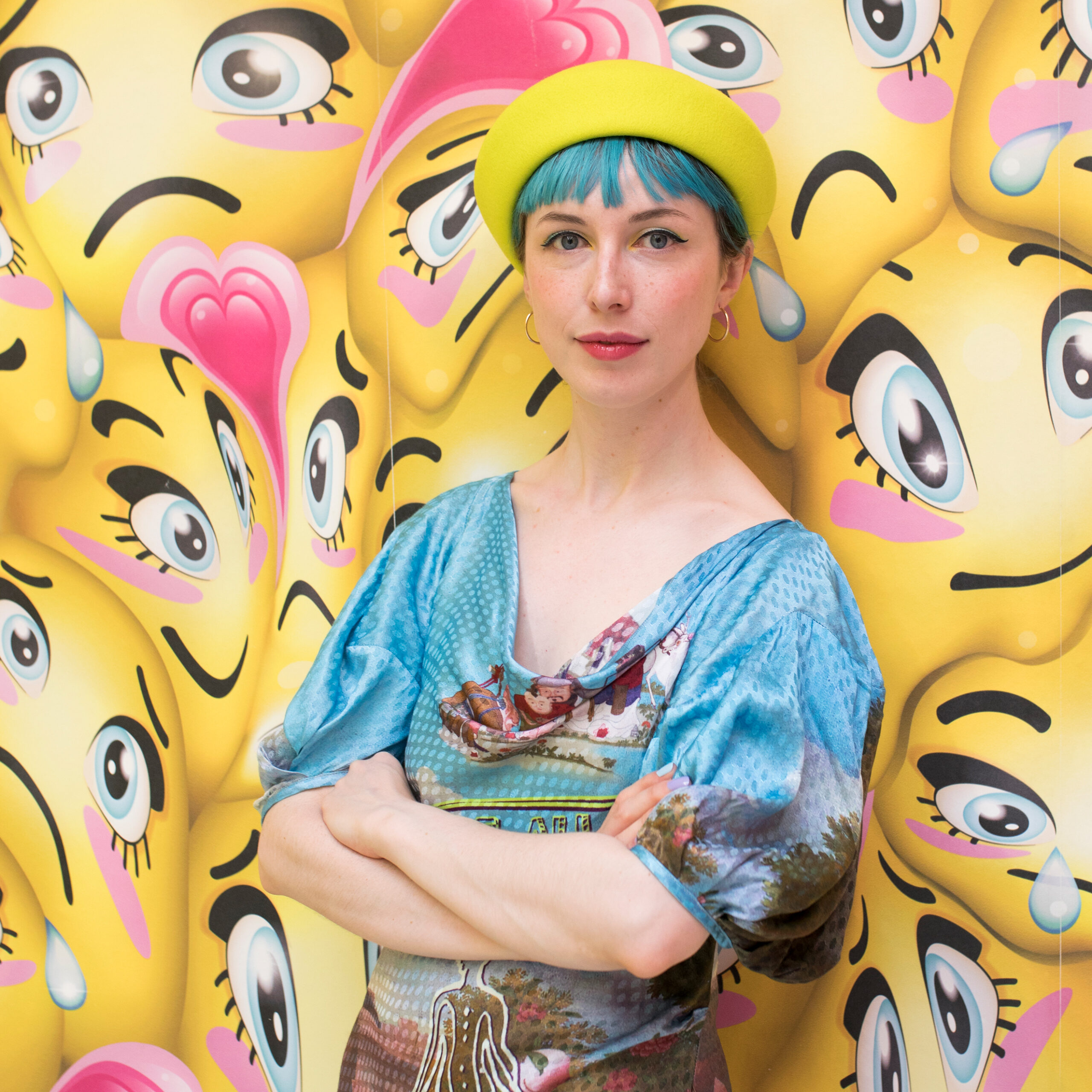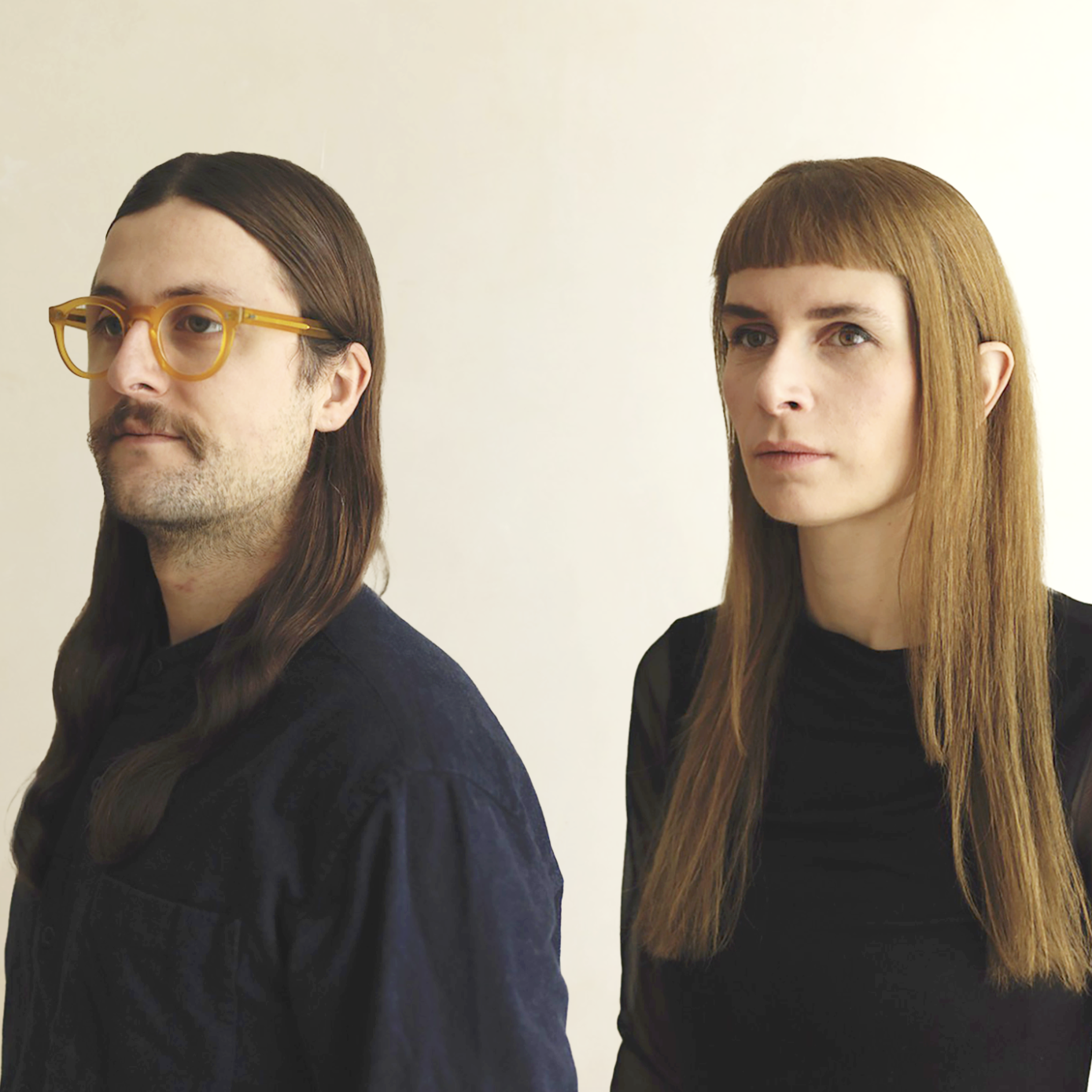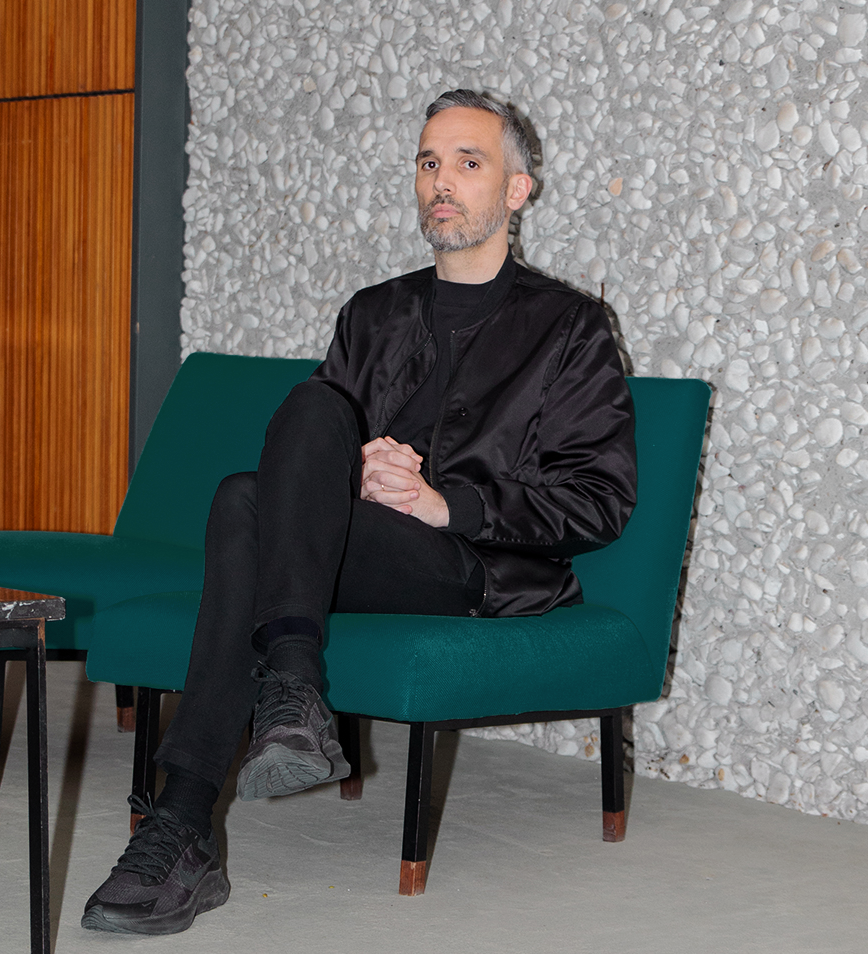We are delighted to share the upcoming series of exhibitions and events taking place in Inspace over the coming months, promising to bring you an inspiring fusion of art, design, research and technology.
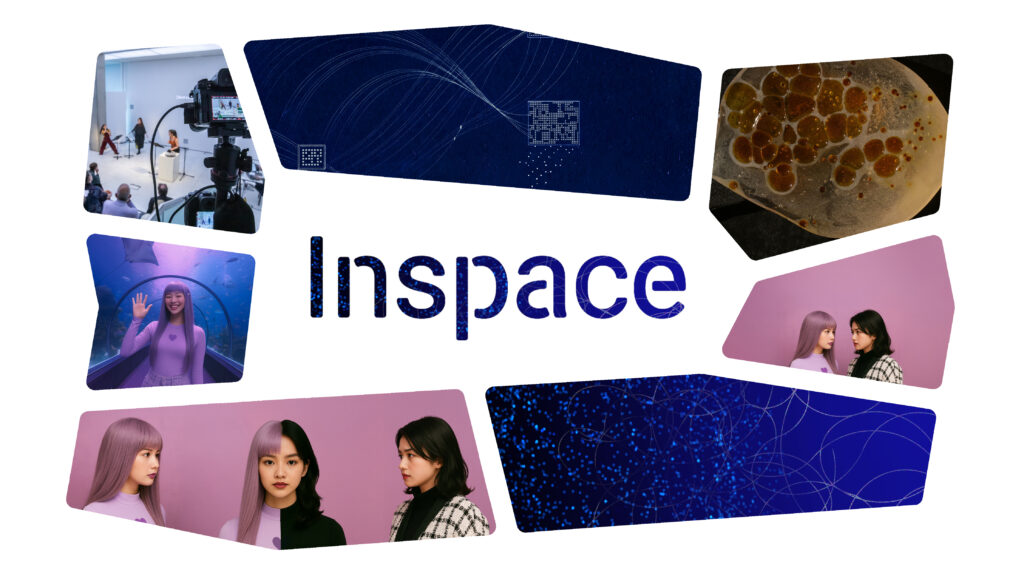
Our pop-up exhibition for Edinburgh Doors Open Day and Explorathon 2025 presents several visual and interactive displays inviting you to gain insights into cancer treatment through a series of intimate portraits, to reflect on the role of AI in the context of aging, to experience ‘Flow’ protoype headset: a tool to measure mental states for wellbeing, and to share your own stories about AI in everyday life.
I & AI: Mirror, performance and immersive installation invites you bathe in the interactive mirror-world, created by Jiarong Yu, through experimental platform Co-STEAM, a softly responsive, ambient environment, where human becomes entangled in the “AI”dentity, questioning if it is possible to meaningfully co-author with AI.
Digital Ghosts presents students’ work alongside a commissioned centerpiece by multimedia artist Dorsey Kaufmann, and data visualization developer Parker Kaufmann, inviting you to go on a reflective journey to explore real web archive data and question what’s preserved, what’s lost, and who decides what’s worth remembering?
Programme overview

Edinburgh Doors Open Day and Explorathon
Where architectural heritage meets technology driven futures
10:00-14:00 | Sun | 28 Sept 2025
As part of Doors Open Day 2025 and Explorathon 2025, we are delighted to be opening the doors of Inspace and the Institute for Design Informatics Studio and Workshop to showcase a snapshot of behind the scenes activity and current research taking place at the Institute. This pop-up exhibition with will be accompanied by guided tours of this unique progressive exhibition facility, and the adjacent Bayes Centre. Inspace was designed by Reiach and Hall architects in 2009, and serves as a collaborative hub, commissioning and producing an ambitious events and exhibitions programme bringing together art, design, technology and research.

I & AI Mirror
10:00-17:00 | Fri-Sun | 24-26 Oct 2025
Set within a softly responsive, ambient environment, this exhibition invites you to interact with, interpret and get intimate with AI. This exhibition programme will feature a real time live and collaborative performance where AI and human performers come together to explore Human–AI intimacy.
Through the softening of traditional techno-aesthetics and foregrounding emotion, transparency, and co-creation, this work invites you to take part in co-reflection and to rethink identity as something constructed in tandem with intelligent systems.
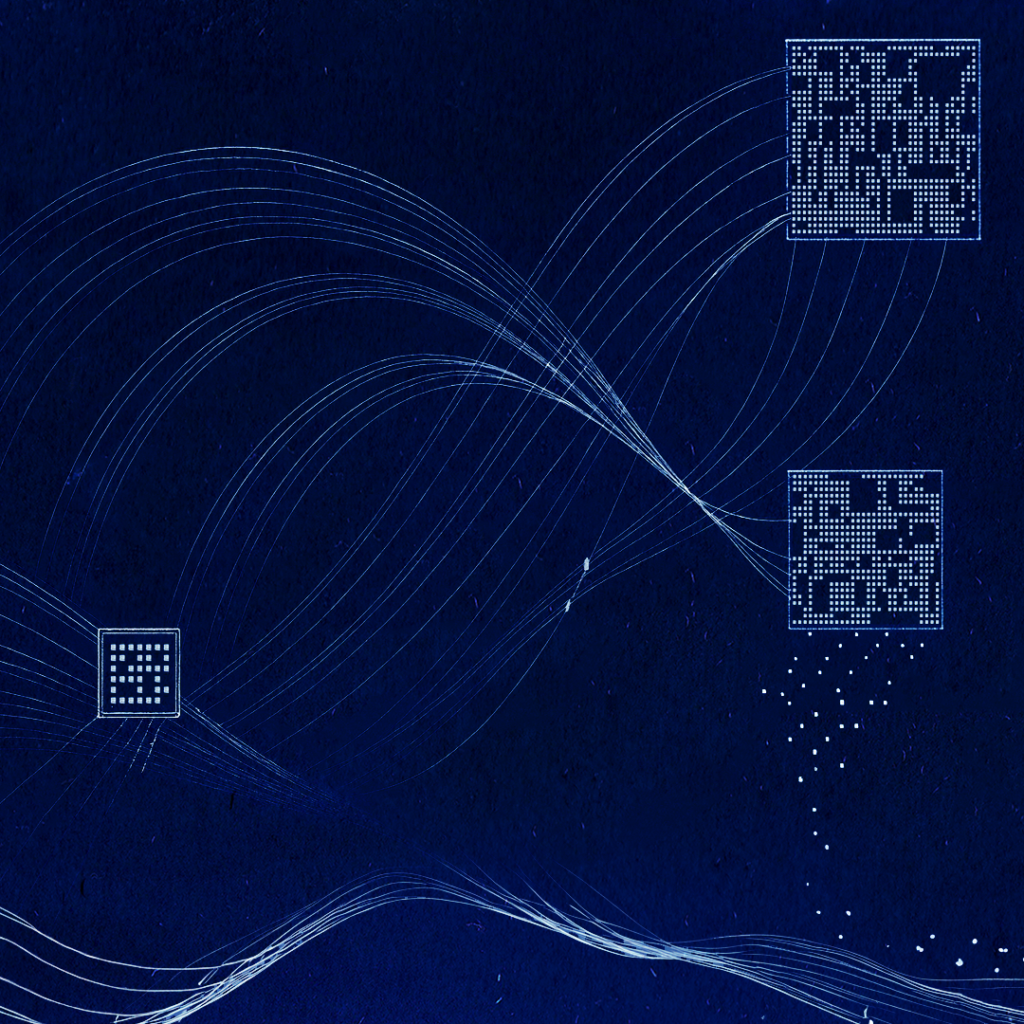
Digital Ghosts
10:00-17:00 | Wed-Sun | 5-16 Nov 2024
Join artists and students from the University of Edinburgh as they invite you to step into the forgotten corners of the internet with an exhibition that transforms real web archive data into playful, thought-provoking artworks. From vanished websites to fading digital traces, this exhibition invites you to reflect on what’s preserved, what’s lost, and what that reveals about our identities and values.
This exhibition will also feature a late event, with panel discussion and a workshop where you are invited to join multimedia artist Dorsey Kaufmann in examining how visual design can reveal patterns of digital disappearance and question how cultural memory is shaped by what is saved and what is lost.
About the Institute for Design Informatics
In the Institute for Design Informatics, we fuse design and creative methodologies with data, data science and data-driven technologies. We create prototypes and experiences that make real to people the ideas that underpin the data society, and aim to ensure that new technologies sustain and enhance human values.
